ARISE Colloquium 2022
Join us in celebrating the achievements of our ARISE 2022 class on Friday, August 12th from 10:00 AM - 1:30 PM!
Welcome to the 2022 ARISE Colloquium! This year our students will be presenting in four concurrent panels, which you can RSVP for here. We encourage attendees to stay for the duration of the panels and to ask questions at the conclusion of each presentation.
Panel A
Students in Panel A listed alphabetically:
Session 1
- Advitya Singh
- Bailey Howe
- Bridget Meier
- Can Jiang
- Carolina Jordan
- Celeste Badillo
- Krittika Chowdhury
- Shwetlana Jha
- William Campbell
Session 2
- Arnik Shah
- Daffny Cardoso
- Genesis Terrero
- Jaida Thomas
- Michelle Uvaydov
- Oliwia Caes
- Samiha Karim
- Steven Doljansky
- Yana Eber
Advitya Singh
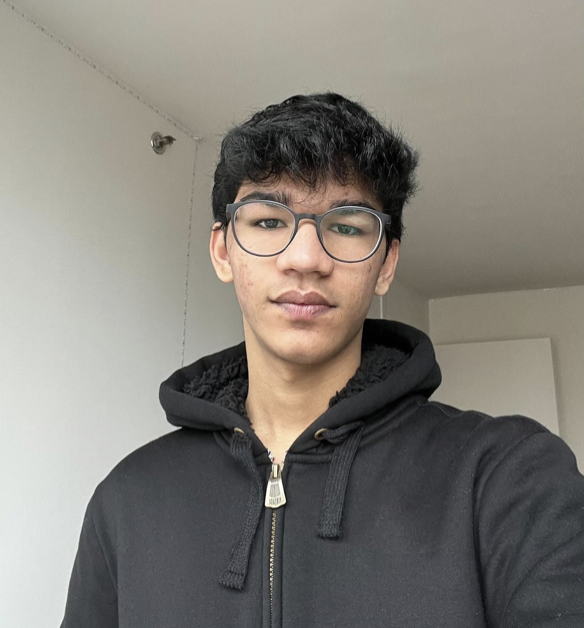
- Lab: Music and Audio Research Lab (MARL)
Abstract:
Entering the sphere of music and learning how to play a new instrument can be challenging. Access to teachers and resources for instrument learning is limited and expensive, and thus is not accessible for many. Software interactive platforms offer an alternative to this problem, as they provide individual feedback for users to get started with an instrument at no cost. These platforms are powered by Music Information Retrieval (MIR) techniques, which employ the computational analysis of music to different aspects of societal importance. In this project, we aim to create a user-lead interactive software which interprets the guitar sound played by a user and gives them feedback on whether the melody played was correct. In particular, the software transcribes a guitar chord/melody played by the user, compares the melody played with a target melody, and tells the user how accurate their performance was. Our motivation is to make the process of learning how to play the guitar easier and more accessible to beginners. Alongside, a long term goal is to encourage a fusion of artistic passion and engineering.
Bailey Howe, Carolina Jordan
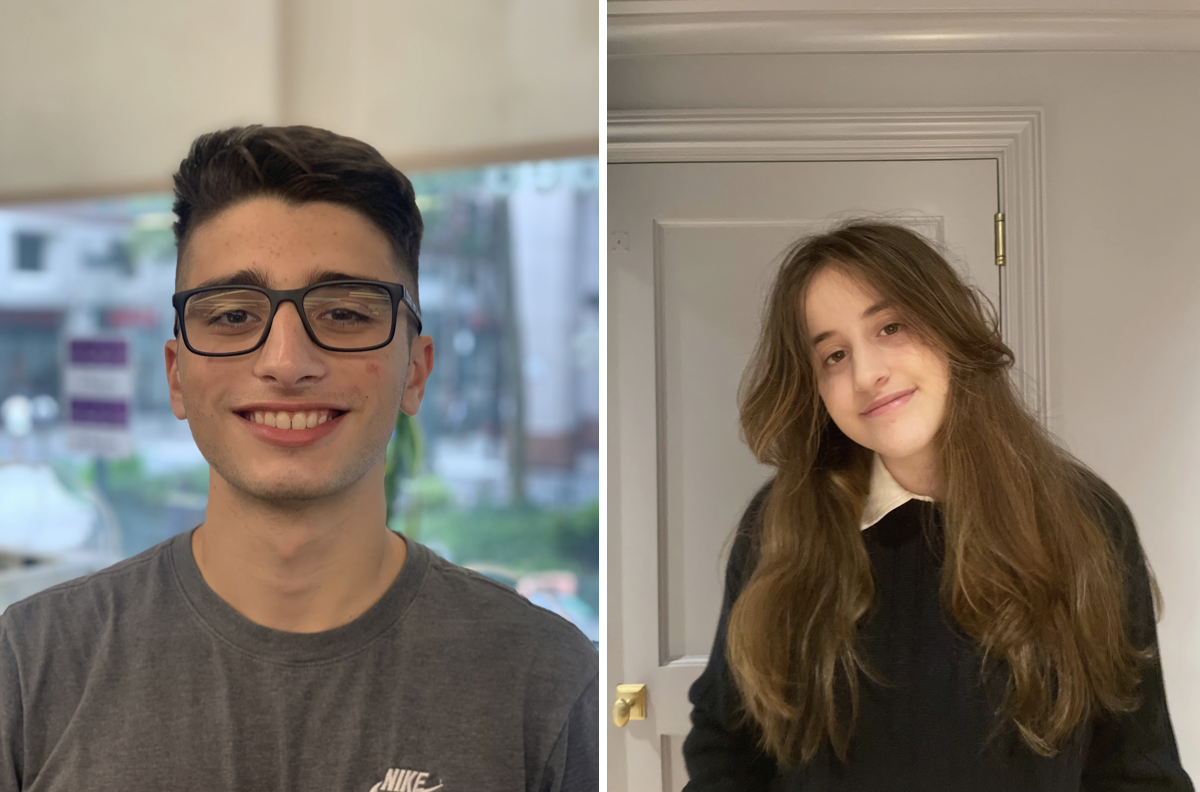
- Lab: Bio-Interfacial Engineering and Diagnostics Group]
Abstract:
Whispering Gallery Mode sensors are a type of optical sensor that detects analytes using trapped resonant light and can be modified into biosensors. A biosensor detects biological molecules with high specificity. Through the use of gold nanoparticles, Whispering Gallery Mode sensors can be enhanced to detect single biomolecules in a solution. The trapped resonant light creates an evanescent field that works to pull the nanoparticles from the solution onto the surface. However, since the nanoparticles and the sensor surface are both negatively charged, there is an electrostatic repulsive force. By increasing the concentration of ions in a solution, the Debye length can be decreased by an electrical screening of the negative charges on the surface, allowing the attractive forces to more readily overcome the repulsive forces and adsorb the nanoparticle to the sensor surface. By locally increasing the ionic concentration, we aim to adsorb nanoparticles to the sensor without contaminating other regions of the sensor. Each adsorbed nanoshell would provide a highly sensitive region for the detection of an analyte. Having increased control of the adsorption of nanoparticles will ease the assembly of the nanoparticle-enhanced Whispering Gallery Mode sensors and possibly aid in multiplexing the sensor. Multiplexing means the sensor can be designed to simultaneously detect multiple different analytes or detect a single analyte in multiple instances. Successfully multiplexing the sensor will also increase the possible uses for these biosensors, such as mapping out a person's unique response to allergens, detection of viral particles, and detection of contaminants in food or liquids. Our work focuses on designing, prototyping, and testing parts using computer-aided design and 3D printing to adapt the current experimental setup to allow for greater control of the ionic concentration around the sensor. Once nanoparticles come close to or begin to orbit the resonator, our system aims to inject higher concentrations of ions local to the resonator to assist in their adsorption. Once stuck, the nanoparticles tend to remain in place, held by Van der Waals forces. Flushing the system would then remove any excess, unadsorbed nanoparticles resulting in an assembled sensor ready for use in further experiments.
Bridget Meier

- Lab: Music and Audio Research Lab (MARL)
Abstract:
Many pedestrians using headphones with noise-canceling technology are at risk of injury due to lack of awareness of their surroundings. This project aims to create more selective noise cancellation that will be able to recognize sounds relevant for public safety and prevent the canceling of these sounds. Some of these sounds may include, speeding cars, police activity, ambulance sirens, etc. For this end, I developed an ambulance-detection algorithm that tracks the fundamental frequencies (F0) of real-world recordings. This algorithm monitors the range of the F0 data to determine whether an ambulance siren is present. To measure my algorithm’s performance I used metrics of precision and recall. Precision is the proportion of correct hits among all hits retrieved by the algorithm, and recall is the proportion of correct hits retrieved by the algorithm out of all possible correct hits. The algorithm’s precision was 39% and the recall was 88% on a corpus of 117 short urban recordings (0.25 hours of audio data, curated from the FSD50K dataset). The algorithm’s performance metrics show that it conservatively detects ambulance sirens, ensuring the safety of the user. After measuring its performance, I deployed my ambulance-detection algorithm into a noise-canceling application called Rattlesnake. Rattlesnake works by inverting the waveform of audio to cancel background noise. This development in the algorithm allows Rattlesnake to detect any sirens and negates their cancellation, allowing its users to hear the hazards in their environment. This algorithm can be further developed to detect other sounds, and the principle can be implemented into customer technologies such as Airpods and other headphones, thus ensuring a safe noise-canceling “audio experience”.
Can Jiang

- Lab: Dynamical Systems Lab
Abstract:
Collective behavior is an essential component of our lives as we interact with different groups on a daily basis. It is crucial to understand group dynamics, specifically how certain individuals may affect the group's behavior. Anxiety is one of the primary factors that alter an individual’s decisions and actions, but the effects of having an anxious individual in a group are yet to be fully understood. In this study, we use zebrafish as a model animal to gain more insights into the effect of anxiety of one individual on the dynamics of others in the group. Zebrafish are chosen due to the similarity between their social behavior and that of humans. This study focuses on experiments conducted with a group of five fish swimming together in a tank with one of the fish being treated with caffeine, known to raise anxiety levels in zebrafish. We hypothesize that having an anxious individual in a group would shift the group's dynamics towards more chaotic behavior. To this end, we study and analyze the recurrence plots of fish trajectories. This framework is frequently used in studying complex dynamical systems from observational and experimental datasets, allowing us to quantify how chaotic the motion of fish is in the presence of another anxious fish. Equipped with the well-developed statistical tools, we wish to answer the hypothesis at hand.
Celeste Badillo, Krittika Chowdhury
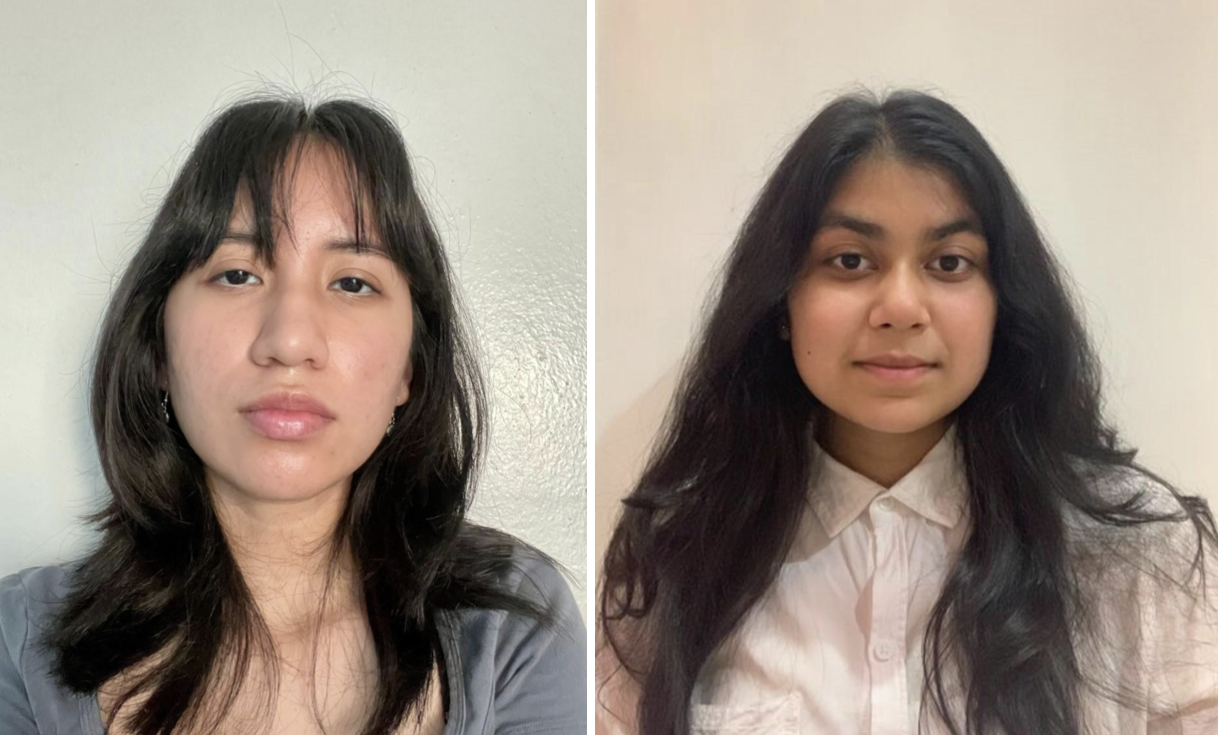
- Lab: FloodNet
Abstract:
As climate change progresses, so does flooding. Due to climate change, sea levels continue to rise, and rainfall intensifies. Flooding deteriorates one’s health, city infrastructure, and the environment. Flooding occurs when precipitation fills storm drainages at high magnitude, when permeable surfaces- surfaces with high sand content, which can absorb large amounts of water- are full, and when sea levels rise. Flooding has been a prevalent issue for the past years, especially in New York City. The city is still left devastated after the impact of Hurricane Ida. FloodNet uses state-of-the-art low-cost ultrasonic sensors to capture data such as the depth, presence, and duration of street-level floods by measuring the flood profiles in real-time, location, and type of flood. Along this, FloodNet classifies floods based on the type it is: coastal or pluvial, minor, moderate, or major. FloodNet’s data, graphs, and charts can be used to alert community members, emergency responders, and storm recovery assistance efficiently. Moreover, the data collected by the network across the city can be used for new and improved infrastructure designs and long-term flood resilience projects. Overall with the use of this real-time flood data, the city will be able to be more prepared for future flooding events and create solutions to prevent severe damage from happening.
Shwetlana Jha, William Campbell
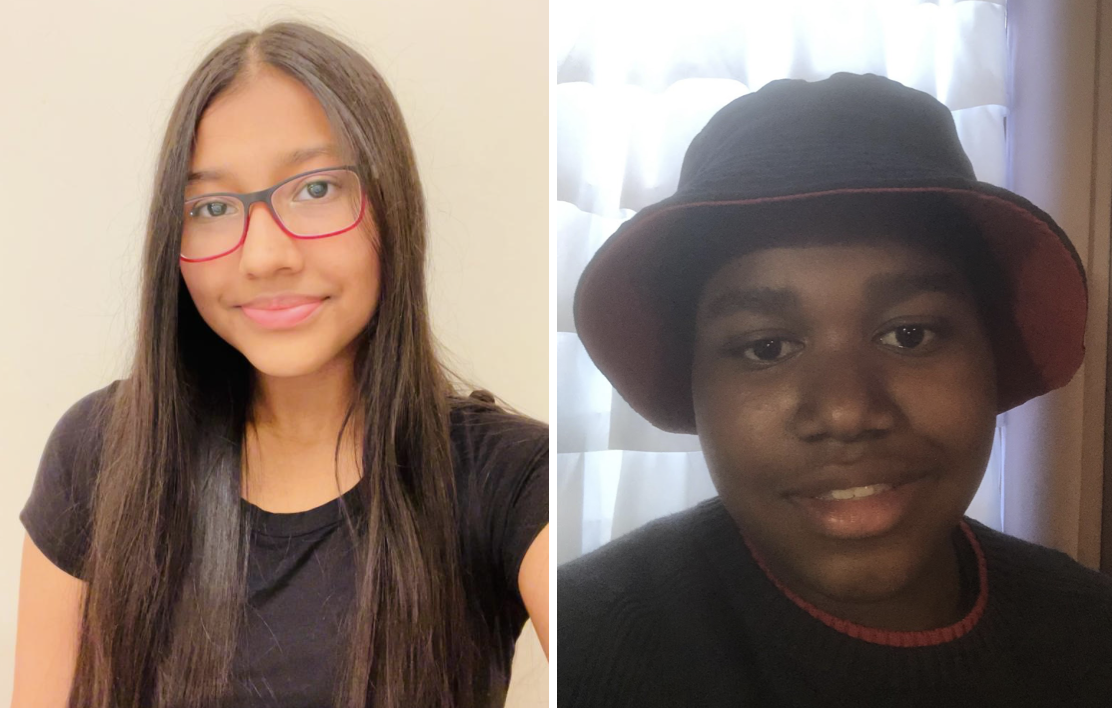
- Lab: Immersive Computing Lab
Abstract:
As virtual and augmented reality (VR/AR) and assistive robotics become more prevalent in our day-to-day lives, the need to understand our behavior in mixed reality increases. Using VR to study cognitive systems is also advantageous as the environment is entirely modular, yet analogous to the physical world. Two modalities we can record easily using VR are hand pose and gaze; together, they may reveal some of the neural underpinnings behind how we interact with objects. In this study, we used Unity3D, Steam VR, and a VIVE Pro Eye headset to create a virtual environment that allows us to observe our hand and eye latencies, defined as the difference in time between a user’s gaze position and its nearest spatial hand position neighbor. Using Unity3D, we collected manual, ocular, and head positions over the course of several trials for multiple participants. Factors such as the color, shape, and speed of a target object were changed to investigate how participants navigated a target pursuit task with their eyes and dominant hand. By experimenting, we hope to determine which factors can be used to optimize human perception, specifically visuomotor coordination.
Session 2 12:00 pm - 1:30 pm
Arnik Shah, Daffny Cardoso

- Lab: Machines in Motion Laboratory
Abstract:
Physical disabilities such as spinal cord injuries, amputation, and musculoskeletal injuries significantly limit one’s participation in everyday activities. To assist people with physical disabilities, active soft wearable robots have been developed in recent years. These devices are able to generate additional forces to help users realize various movements that are otherwise not possible. However, it is crucial that the actuation of the robot adapts to the user’s anatomy and preferences to avoid discomfort or injury. To address this issue, we study human reaching movements in the context of designing adaptive controllers for an upper limb exoskeleton. In particular, experiments were conducted to collect a dataset using a motion capture system. The subjects were instructed to reach nine fixed targets from an arbitrary initial position. The positions and orientations of markers attached to subjects’ shoulder, elbow, and wrist were recorded and mapped to the joint space using iterative inverse kinematics. This dataset of joint trajectories can then be used in an inverse optimal control pipeline to analyze the underlying cost function of the subjects.
Genesis Terrero

- Lab: Ripollés Lab
Abstract:
Investigating a human’s response to rewarding stimuli, like music, can reveal factors which contribute to motivation, risk-taking, social bonding and overall well being. Music reliably produces strong pleasure responses, making it an ideal stimulus to study reward. Peak moments of musical reward can be detected through “chills,” which accompany the activation of the autonomic nervous system during arousal responses to reward. Previous studies have used electrodermal activity (EDA) and self-reporting to measure these musical chills, however, EDA is highly sensitive to motion artifacts, and therefore not suitable to study music in a natural setting where people naturally move in response to the music. This method of detecting musical chills is unconstrained by movement, making the CHILLER (a Computer Human Interface for the Live Labeling of Emotional Responses) a more optimal way of capturing peak moments of musical pleasure through an objective physiological measure. In addition, the CHILLER detects goosebumps in real-time, which is suitable for real-world settings like live concerts. Also, the CHILLER is easy-to-use and affordable, making it an accessible technology. While putting the CHILLER into use, it was seen that goosebumps can also be triggered by cold temperatures. This is a problem, as the CHILLER would interpret these goosebumps as a marker of pleasure despite not being so. Therefore, a temperature sensor was added to control for this. The end product of this project is a new version of the CHILLER that can control, in real-time, for temperature changes.
Jaida Thomas, Steven Doljansky
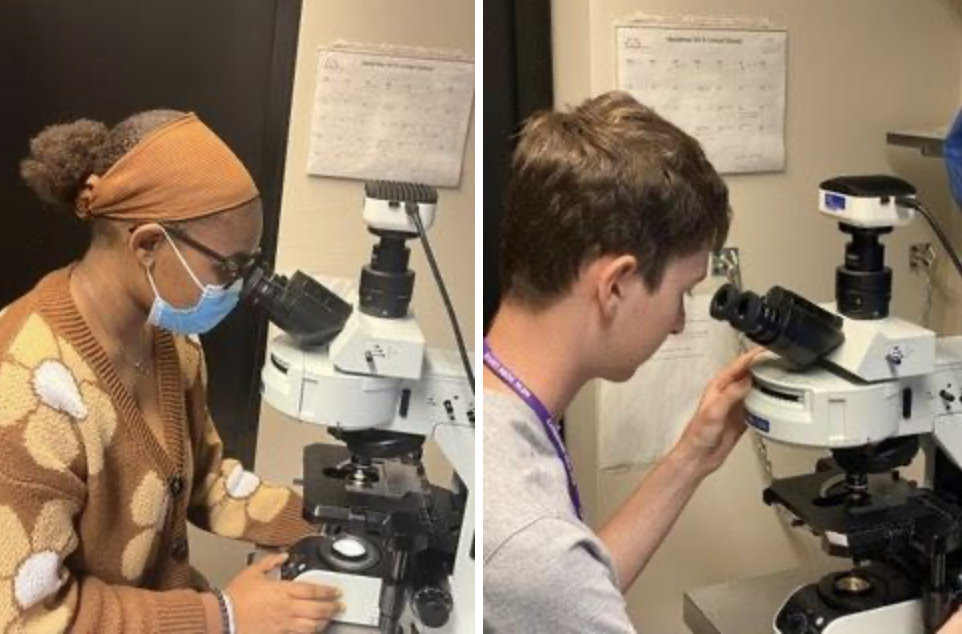
- Lab: Molecular and Cellular Biology Lab
Abstract:
The centromere is essential in the process of chromosomal segregation during cell division. Kinetochore proteins are assembled on centromeric DNA through the fundamental histone H3 variant, CENP-A. The outer kinetochore proteins, such as DASH/Dam1 complexes, build on the top of the inner kinetochore and interact directly with microtubules to segregate chromosomes. In our previous genome-wide visual screening, we identified mutations of dad2, spc19, spc34 and dad5 which are the components of the DASH/Dam1 complex that affect the distribution of CENP-A in fission yeast. However, not all ten components of the DASH/Dam1 complex were identified from the screening. This raises the question whether the whole complex is required for CENP-A localization moreover why and how outer kinetochore proteins affect the distribution of CENP-A. In this study, we investigated the CENP-A-GFP distribution and centromere integrity in each of the DASH/Dam1 complex subunit mutants. This study may help define the role of the DASH/Dam1 complex in the distribution of CENP-A. Mis-localization of CENP-A can cause severe chromosome segregation defects which results in aneuploidy or cell death. Understanding the mechanism of CENP-A distribution regulated by fungus-specific DASH/Dam1 complex might contribute to developing a potent antifungal drug.
Michelle Uvaydov

- Lab: Transformative Materials Lab
Abstract:
Solar panels operate by absorbing incident light and using that energy to excite electrons, producing an excited electron and a “hole”, or the place where that electron used to sit. The solar module is designed in such a way that these excited electrons and holes are first moved into a circuit, where we can do work with them, before they return to the low-energy state they were in before absorbing light. The two layers responsible for helping these charges move into circuits, rather then uselessly relaxing inside the module, are called the electron transport layer and the hole transport layer. Development of the hole transport layer for perovskite-based solar cells has been a large challenge. Scientists either achieve high efficiency or long-term stability, but have never gotten both. This project is aimed at handling a problematic ingredient in the hole transport layer, lithium. By experimenting with both different chemical compositions, as well as different approaches to fabrication, the issue of lithium can hopefully be removed or sufficiently ameliorated.
Oliwia Caes, Samiha Karim
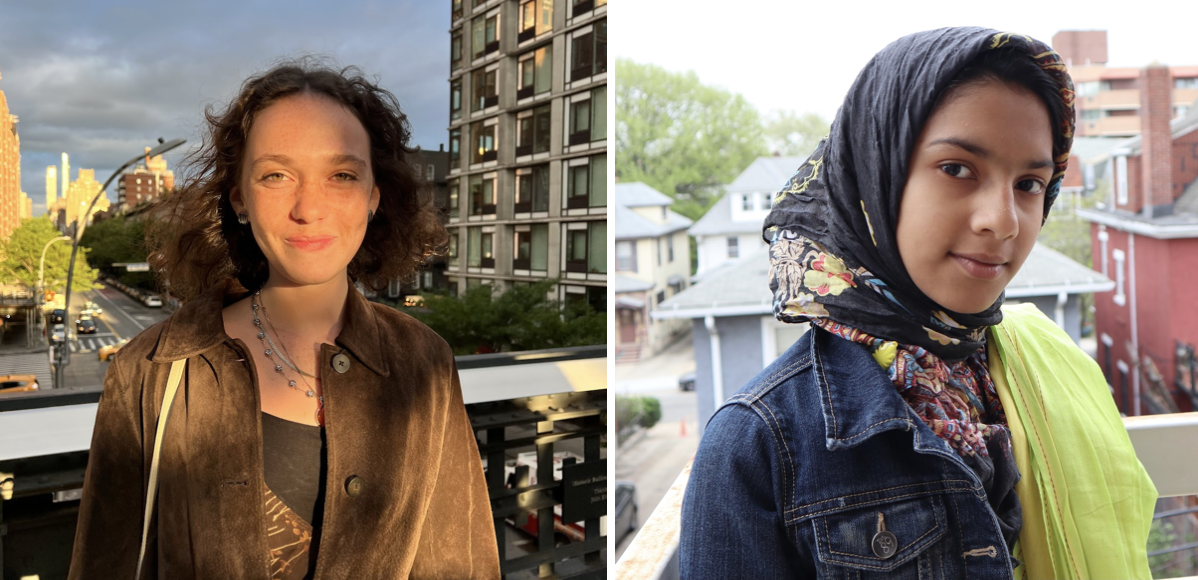
- Lab: Silverman Lab
Abstract:
There is growing interest in algae based wastewater treatment technologies due to their relatively low cost and the opportunities for nutrient recovery and biofuel production that they present. Disinfection in these systems occurs primarily through the action of sunlight which can inactivate bacteria and viruses directly when it is absorbed by these organisms, or indirectly when photosensitizers in the water, which include organic matter formed by algae, absorb sunlight, forming reactive species such as singlet oxygen that can kill bacteria and viruses. In studies looking to better understand the role of algae during sunlight disinfection, researchers typically use model algae species such as the freshwater species C. reinhardtii as a proxy for the mixed culture of species often found in wastewater treatment plants. Additionally, the algae used in lab-scale experiments is often grown in nutrient rich growth media that contain all the trace metals needed for optimal algae growth, however the composition of such growth media may not reflect that of actual wastewater. The goals of this study, therefore, are (1) to compare the growth behavior of the model species, C. reinhardtii with that of a mixed algae culture sourced from a wastewater treatment plant, when grown in a modified Tris-Acetate-Phosphate (TAP) growth medium versus in wastewater-derived organic matter, and (2) to establish whether sunlight disinfection studies utilizing C. reinhardtii grown in modified TAP medium are able to closely approximate what would be observed under more real-world conditions such as with a mixed algae culture grown in wastewater. We aim to do this by comparing reactive species formation during sunlight exposure of the extracellular algal organic matter produced by C. reinhardtii versus by a wastewater-sourced mixed algae culture. This research is important to understand how representative observations made in previous sunlight disinfection studies utilizing C. reinhardtii as a model species are of real-world conditions.
Yana Eber
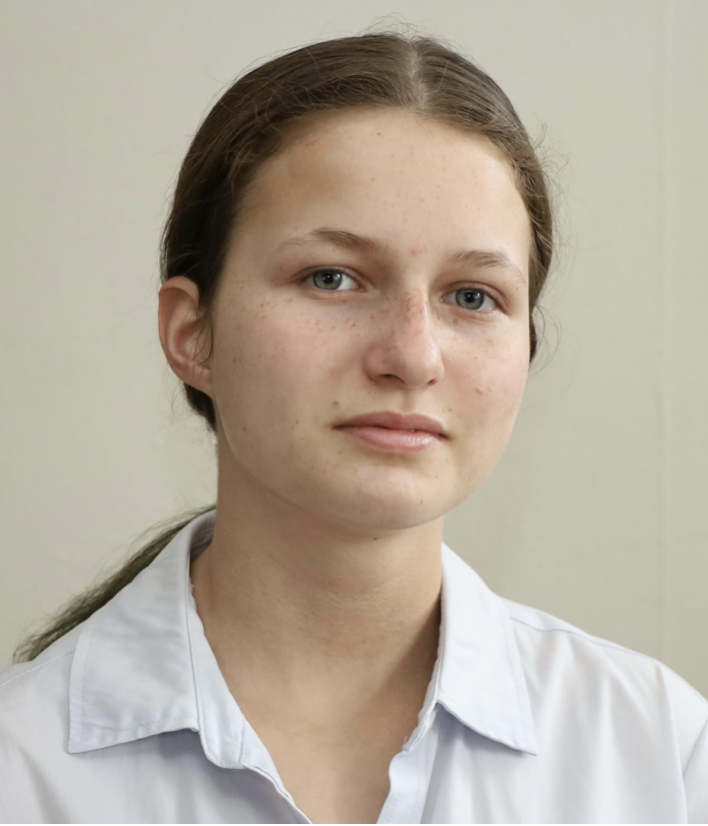
- Lab: Transformative Materials Lab
Abstract:
Current state-of-the-art methods for plastic degradation and recycling are not effective and economic enough due to the composition complexity and uncertainty of plastic mixtures. In 2017, only 3 million tons of 35 million tons plastic wastes generated in the United States were recycled, while 5 million tons were combusted and the rest 27 million tons were landfilled. Enzymatic hydrolysis is a promising recycling technology which utilizes bioactive proteins to hydrolyze polycondensates to harvest monomers. However, the enzyme tolerance towards impurities in the mixed wastes and selectivity over specific hydrolysis products are concerns for its future wide application. In this study, we are focusing on the additives in recycled polyethylene terephthalate and the product analysis of its enzymatic hydrolysis. Combined advanced characterization methods including X-ray powder diffraction, gas chromatography–mass spectrometry, and infrared spectroscopy are used to identify the chemical composition of the mixture.
Panel B
Students in Panel B listed alphabetically:
Session 1
- Alexandru Gheorghe
- Chidinma Ebere
- Fouzia Alam
- Jamiley Avila
- Jayden Black
- Saira Masud
- Sheyla Almanzar-Abreu
- Steven Yan
- Susan Wang
Session 2
- Erica Liberman
- Jamila Conde
- Julien Hanna
- Lila Dorsett
- Motunrayo Owoborode
- Rozalen Adous
- Sameer Karmarkar
- Suhama Saniz
Alexandru Gheorghe
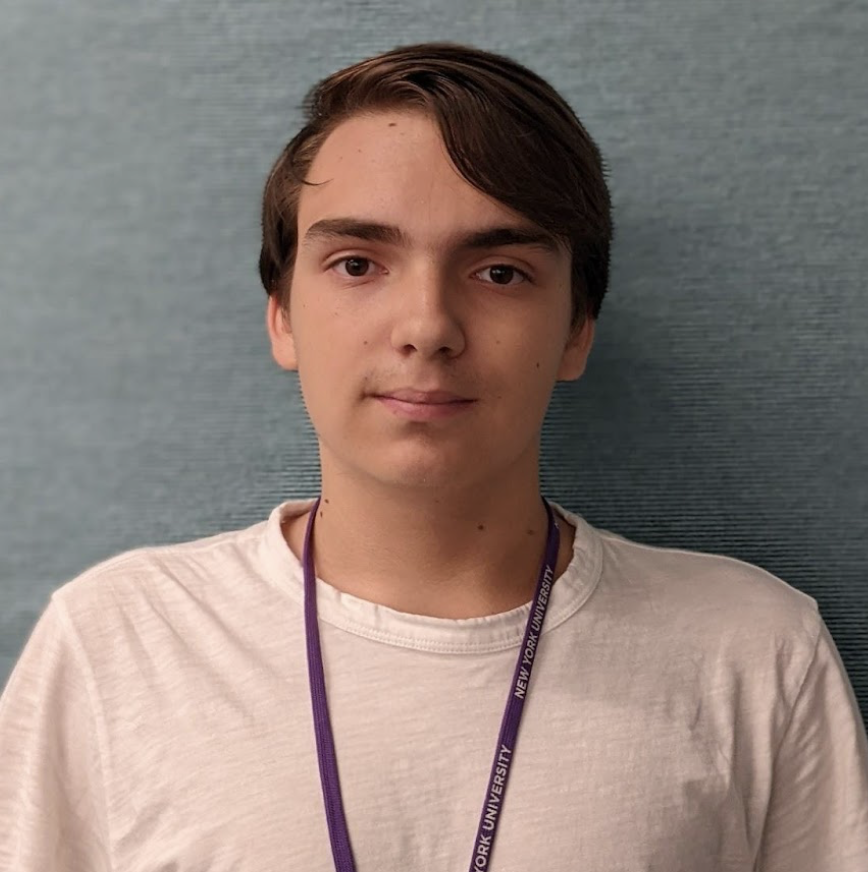
- Lab: Applied Dynamics & Optimization Lab
Abstract:
One of the biggest advantages of underactuated passive bipedal walkers is their energy efficiency. Underactuated passive bipedal walkers are two-legged robots with limited motor control to allow for freer movement. The minimal motor usage, along with the potential energy built up during the walker’s gait cycle, allows for more energy efficiency as compared to other robots and similarly to humans. In this project, we compare two different robots with ankle and leg actuation, respectively. To improve the stability and speed of the ankle-actuated robot, we built a dynamic walker that has both ankle actuation and a passive hip. As a result of the addition of the passive hip to the ankle actuated walker, the robot, which previously had small step lengths, is able to traverse longer distances due to the increased hip mobility.
Chidinma Ebere, Jamiley Avila
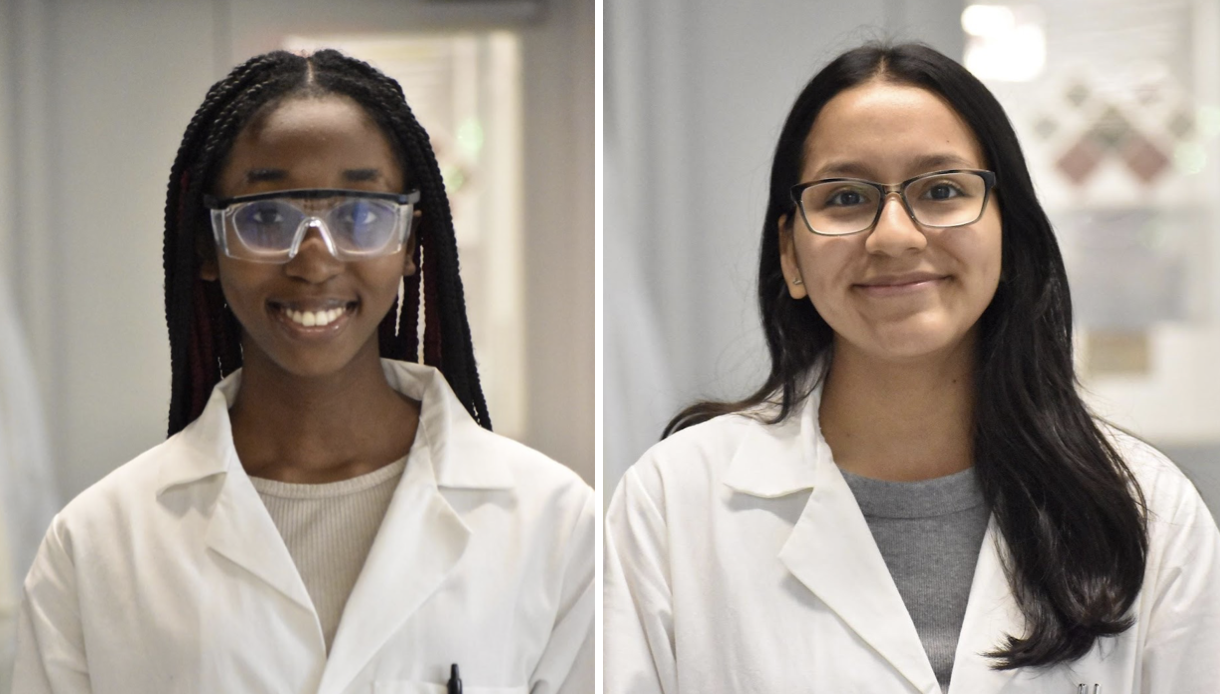
- Lab: Pinkerton Lab
Abstract:
Nanotechnology has advanced the world of medicine through the introduction of nanoparticle drug delivery systems. Encapsulating drugs into polymeric nanoparticles is a promising method to achieve effective drug delivery for pain. We are interested in delivering pain drugs in the gastrointestinal (GI) tract to treat conditions such as Irritable Bowel Syndrome. Previous experimentation has shown that poly(ethylene glycol)-coated (PEGylated) nanoparticles administered within thermosensitive hydrogels were successfully taken up by the GI tract in mice. The hydrogel matrix exhibited different viscosities at different temperatures allowing for in situ gelation and sustained nanoparticle delivery. However, the mechanism of this system is not well characterized. Our project goal was to determine the effect of nanoparticle size and hydrogel mesh size on the diffusion rate of PEGylated nanoparticles from a thermosensitive hydrogel. We quantified the diffusion of nanoparticles into aqueous media through a novel hydrogel water system. Rubrene is an advantageous fluorophore since it is easily encapsulated in the core of polymeric nanoparticles via Flash NanoPrecipitation. Nanoparticles were suspended in Pluronic F-127 hydrogels of varying weight percentages. We characterized the nanoparticles using dynamic light scattering, thermogravimetric analysis, and spectrophotometry. The change in fluorescence intensity was used to quantify the rubrene nanoparticle concentration over time. We speculate that a lower weight percent hydrogel will allow for a faster diffusion rate of nanoparticles.These findings will aid in the development of an in vitro assay and creation of an optimized nanoparticle drug delivery system for treatments of Gl conditions.
Fouzia Alam, Susan Wang

- Lab: Biomolecular Engineering Lab
Abstract:
β-glucosidase can carry out a vast range of activities in microorganisms, plants, mammals, and other organisms. β-glucosidase’s ability to hydrolyze sugars, such as oligosaccharides and cellobiose, can be manipulated to improve and fulfill the needs of growing industrial, agricultural, and biotechnological fields. For instance, β-glucosidases can enhance the taste and aroma of beverages such as wine or tea and are also critical in the production of biofuels through biomass hydrolysis. Due to its numerous beneficial properties, current research aims to increase the stability and activity of β-glucosidase through the binding of various compounds. Before experimentation, AutoDock was used to predict the affinity between the compounds and enzymes from the organisms Pyrococcus furiosus (PfBGL) and Thermoanaerobacterium aotearonese (TaBGL), PyMOL was used to visualize the residues present and the optimal binding sites for each compound, and Discovery Studios was used to create 2D-diagrams of the models produced from PyMOL. After analyzing the models and data collected, enzyme activities were measured with the substrate, 4-Nitrophenyl β-D-glucopyranoside.
Jayden Black
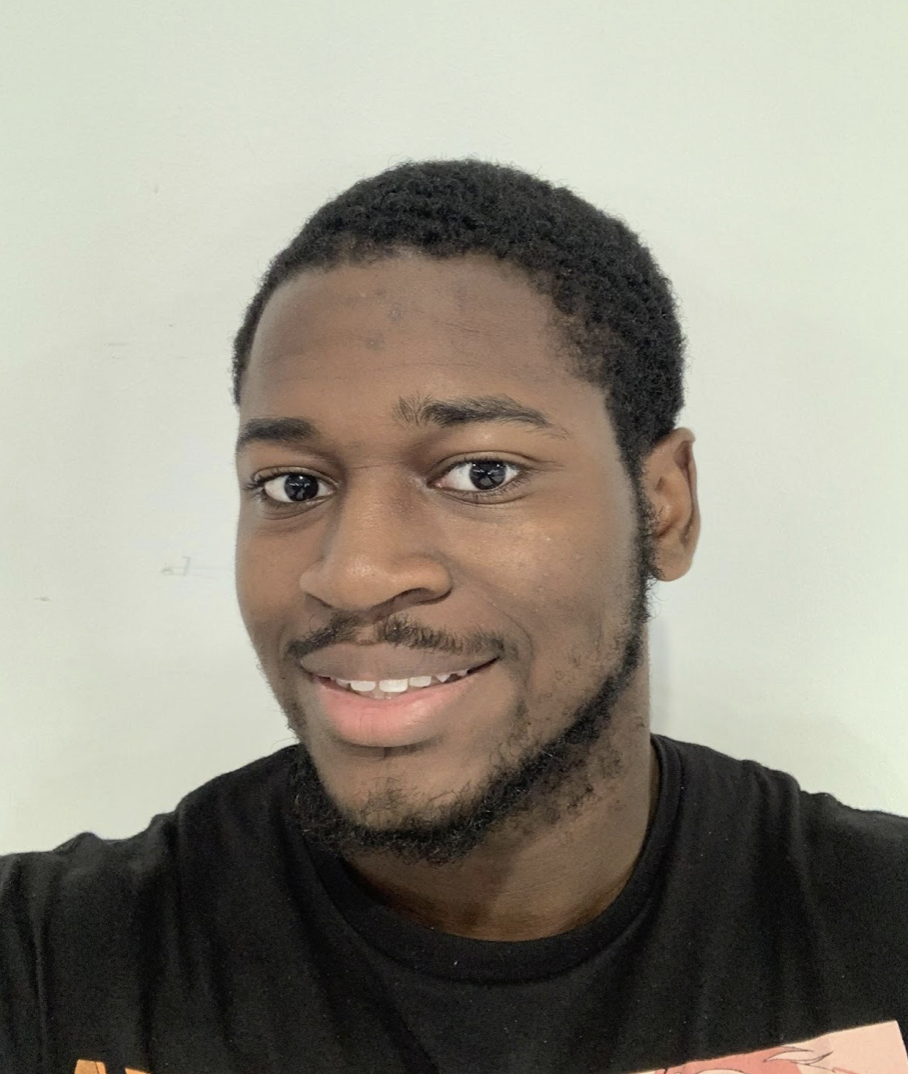
- Lab: Applied Dynamics & Optimization Lab
Abstract:
To understand how penguins walk the way they do, we need to take a deeper dive into their biomechanics. Unlike their other avian counterparts, penguins are flightless birds with paddle-like flippers instead of wings. Penguin bodies are fusiform, such that their bodies taper at both ends, and causes them to walk in a waddle motion that goes from side to side. This waddling gait is efficient because of the penguins innate ability to use their bodies to store potential energy during lateral sway. The purpose of this project is to develop a robot body similar to a penguin that mimics their energy efficiency.
Saira Masud

- Lab: Applied Dynamics & Optimization Lab
Abstract:
A motion capture system is a valuable tool for understanding the behavior of a legged robot. This project focuses on building an experimental set-up for a passive dynamic penguin-inspired robot. A 6-camera Vicon system was used to obtain the kinematic trajectory of the bipedal robot. The system uses passive optical motion capture with infrared cameras to track retroreflective markers placed on the robot's pelvis, hip, and foot to record its motion. In addition, a skeleton model of the walker was created within the Vicon software to obtain x-, y-, and z-displacement trajectory results, which were exported into the R programming language for statistical computing to verify that the experimental set-up was successful. This can further be used to analyze the robot's different characteristics, such as walking speed.
Sheyla Almanzar-Abreu, Steven Yan
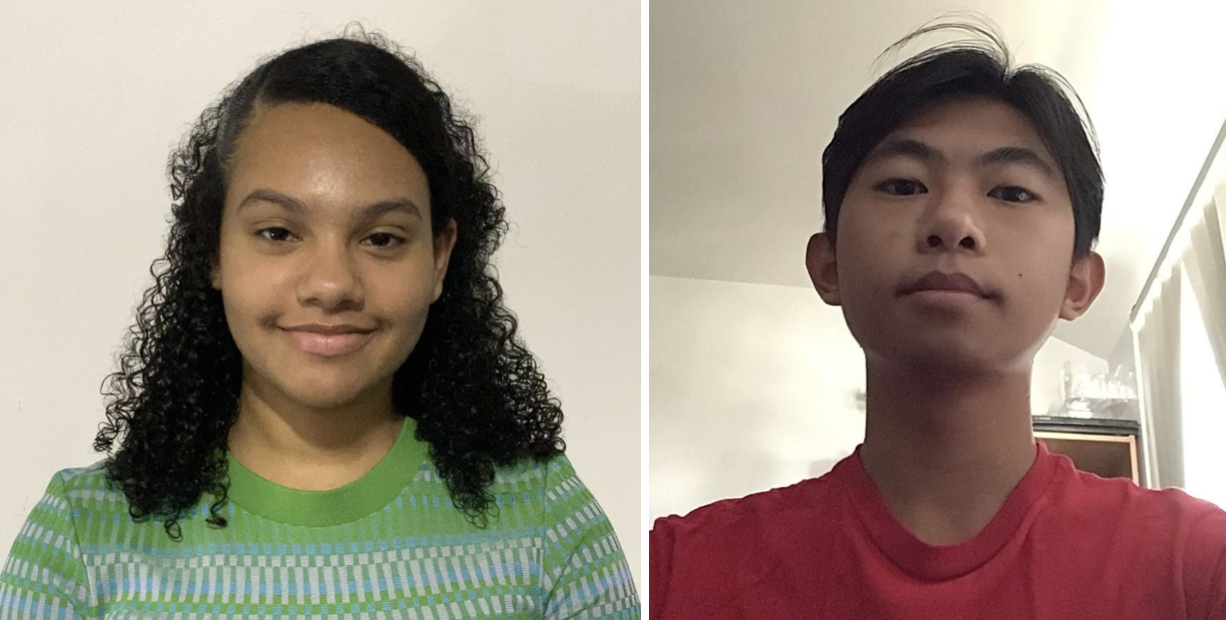
- Lab: Urban Mobility and Intelligent Transportation Systems (UrbanMITS) Laboratory
Abstract:
In recent years, there has been an increase in bike ridership. Along with this growth comes an increase in ridership fatalities and injuries. We aim to increase bike safety by developing an interactive dashboard that researchers and scientists can use to better understand the reasons for injury and develop the means to improve safety on the routes. The data in the dashboard was gathered by a portable multi-sensor device, the BSafe-360, developed by researchers of the UrbanMITs lab. The device has a Global Positioning System (GPS) receiver, two ultrasonic sensors, an inertial measurement unit (IMU), and a real-time clock (RTC). This device allowed for the collection of data about the trajectory of bikes and, more importantly, how close vehicles were to bikes and if they were passing at a safe distance. The data collected from the device will be reflected and demonstrated in the dashboard with key metrics. The dashboard will include graphs illustrating the speed distribution, altitudes, and acceleration along with an interactive map demonstrating the distance between the bike and the vehicle and the specific location. The data will further allow researchers and scientists to recognize patterns and issues that need to be addressed to develop safer biking transportation.
Session 2 12:00 pm - 1:30 pm
Erica Liberman, Rozalen Adous
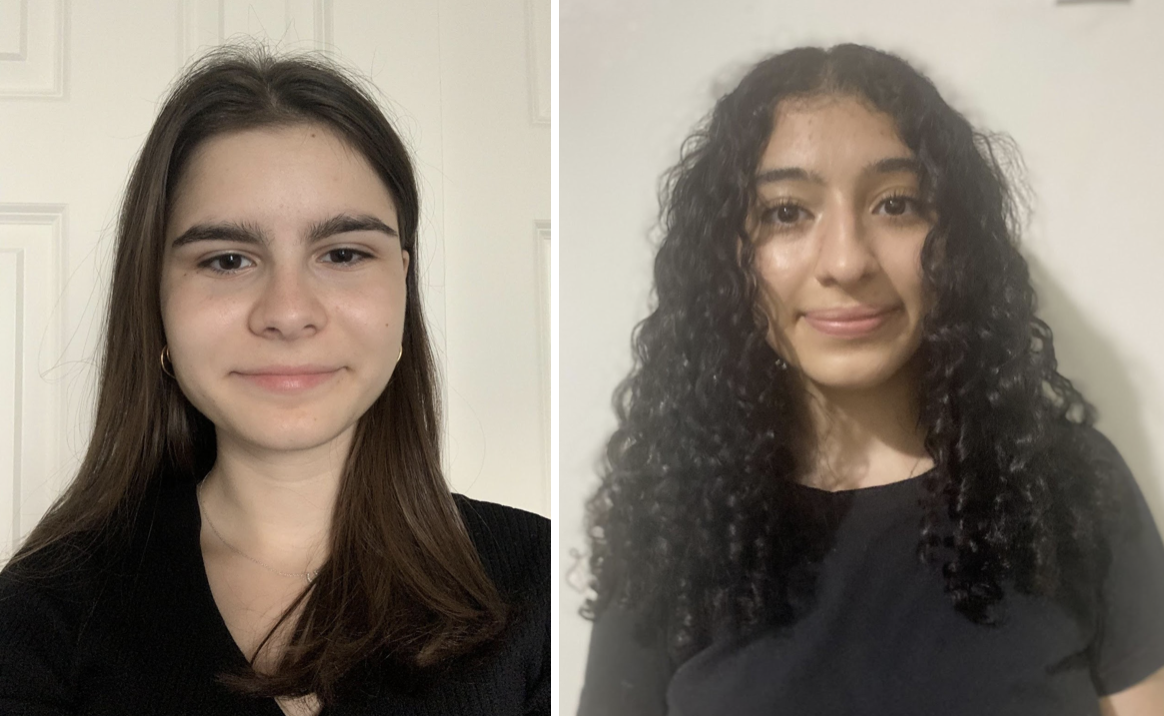
- Lab: Machine Learning for Good Laboratory [ML4G Lab]
Abstract:
Prior research examining various policing practices has provided evidence of biases in the effects of policing on certain sub-communities of individuals defined by racial identities, gender, and socioeconomic status. Given these studies, our project has two goals. First, we examine biases in NYPD arrest rates for hate crimes, with the goal of understanding whether hate crimes directed toward different demographics are investigated more or less thoroughly by police. Second, we investigate how probabilistic predictions, in combination with contextual information, known as algorithmic nudges, could potentially be used to assist police when deciding to conduct a stop-and-frisk search, with the intention of highlighting the potential of this approach to reduce common racial and ethnic biases associated with the practice of stop-and-frisk searches. To find biases in arrests made for hate crimes, we use a novel pattern-detection algorithm called conditional bias scan, which detects intersectional subgroups where there is significant bias against a specific protected class. To explore the potential of algorithmic nudges for reducing biases in the policing practice of stop-and-frisk searches, we design a survey with three possible scenarios, which simulate real-time policing decisions without algorithm-generated information, with information about the probability that an individual possesses a weapon, and with probabilistic information and scenario-specific algorithmic nudges about over-policed communities. Our research contributes to the continual effort to examine biases in policing, and showcases with simulated scenarios how the emerging practice of aiding decisions with probabilistic information and context-specific algorithmic nudges could potentially reduce biases in stop-and-frisk searches.
Jamila Conde, Lila Dorsett
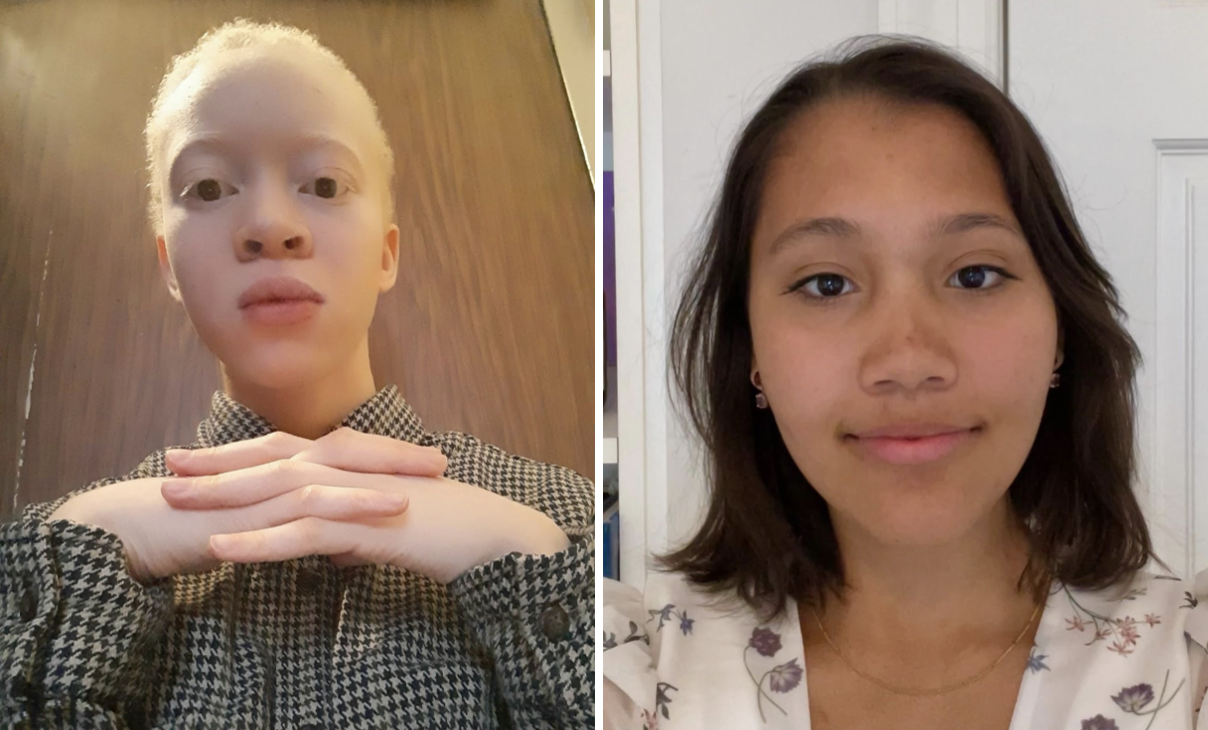
- Lab: Chromatin Genomics Laboratory
Abstract:
Dosage compensation ensures the correct balance or “dose” of genes on the sex chromosomes between males and females or hermaphrodites. The Dosage Compensation Complex (DCC) in the nematode Caenorhabditis elegans consists of a chromosome compacting condensin and five non-condensin subunits. One of the non-condensin subunits, DPY-30, is also part of the widely conserved COMPASS complex that trimethylates lysine 4 on histone 3. It is unknown whether nematodes outside of Caenorhabditis dosage compensate in a condensin-mediated manner. We aim to use DPY-30’s conservation in search of the DCC in the nematode Pristionchus pacificus. To generate an antibody for P. pacificus’ DPY-30 (Ppa-DPY-30), we used the BL21(DE3) bacterial expression system with his-tag purification. Following expression, we purified Ppa-DPY-30 using Nickel-NTA column chromatography, and visualized it on an SDS-PAGE gel stained with Coomassie Blue. After generating an antibody against our purified protein, we will determine its binding sites on the X chromosome of P. pacificus with ChIP-seq, which will allow us to infer its functions.
Julien Hanna, Suhama Saniz
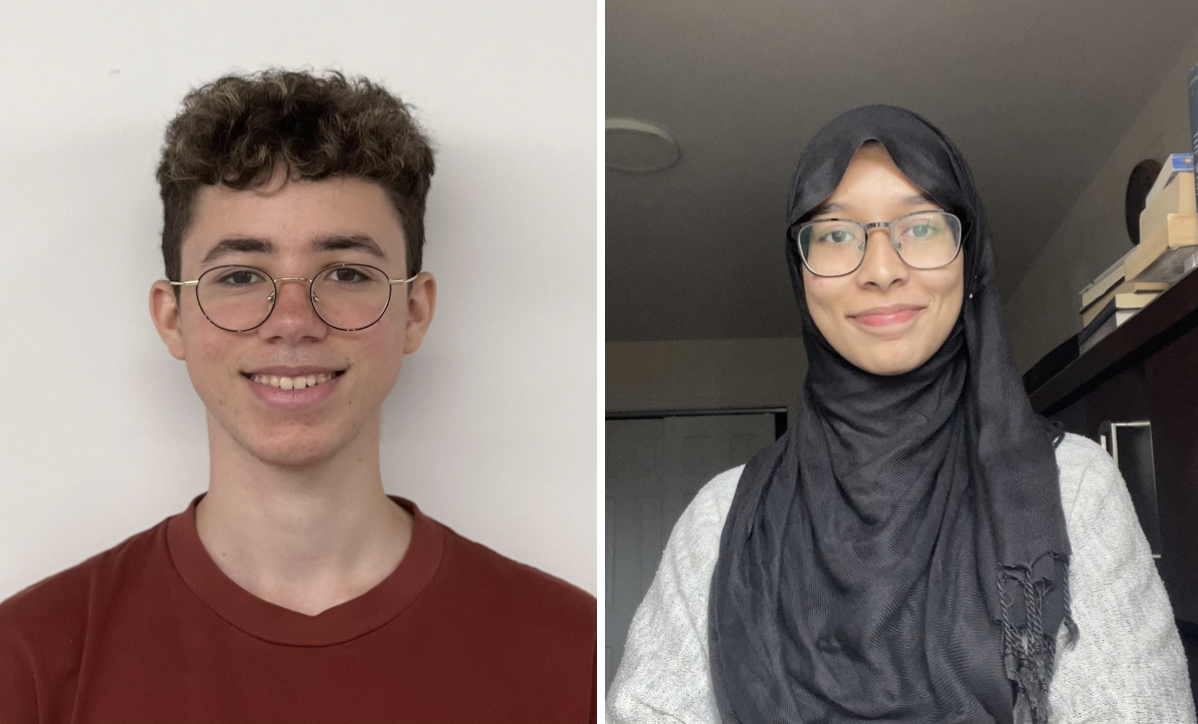
- Lab: E=hnu Hybrid Nanomaterials Laboratory
Abstract:
Colloidal quantum dots (cQDs) are solution processable nanocrystals on the order of 2 - 20 nm. At such size scales, a couple atoms in length, an effect known as quantum confinement dominates the electron energy landscape. This allows for “wave function engineering” to be used as a tool to sculpt the spatial distribution of charge and spin states to fine tune the energy and optical/thermal properties of systems. This engineering sees a variety of applications in fields such as electronics, medicine, photonics and catalysis. Our focus has been on the realization of low-cost photodetectors with high sensitivity, quantum efficiency, gain and fast photoresponse in the visible and short-wave infrared regions of light. In this work we explore using Cadmium Selenide (CdSe) as a visible photon absorber by building photoconductive devices using a planar interdigitated electrode system. While this material is well studied we choose to focus on the next stage of development in the cQD cycle - that of device fabrication. Herein we fabricate devices using three techniques: a home-made dip coater, a traditional spin coater, and a home-made spray coater. We compare the devices we obtain from each technique and report device performance using common metrics such as responsivity, on/off ratios and current-voltage sweeps.
Motunrayo Owoborode
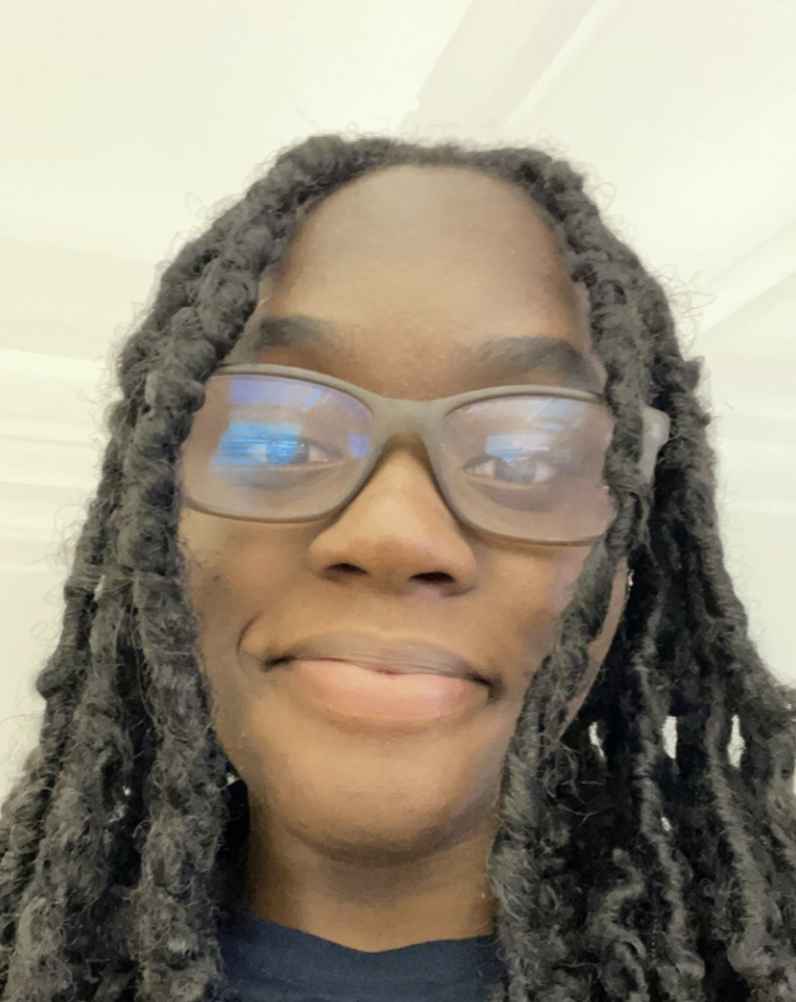
- Lab: Future Building Informatics and Visualization Lab (biLAB)
Abstract:
Façade inspections play a significant role in maintaining buildings and public safety measures. The current means and methods are carried out based on manual and visual inspections, and these practices are expensive, time-consuming, and labor-intensive. Nevertheless, they fail to eliminate safety risks and accidents. Beyond this, inspections entail high domain knowledge, and the results often vary based on the level of expertise of an inspector. To address these issues, an automated and effective method for inspection and condition evaluation is urgently needed. This study focuses on detecting surface deformation-based facade defects that require analysis of 3D geometry. In this context, we generate synthetic façade defects using point-cloud data, which will then be used in our 3D deep learning and artificial intelligence algorithms for the identification and classification of facade defects. By doing this, we intend to address the issues related to the lack of a 3D dataset containing surface deformations of facades. In the next step, our deep learning algorithm will analyze the synthetic data, identify and classify the predefined defects and report the severity of deformations.
Sameer Karmarkar
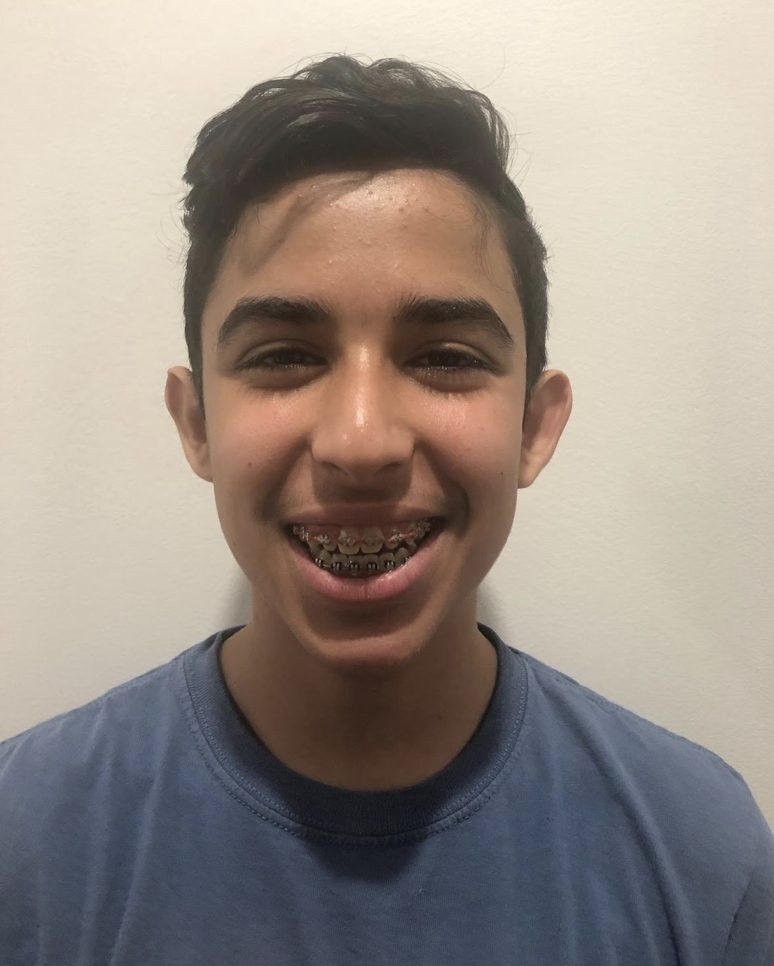
- Lab: Future Building Informatics and Visualization Lab (biLAB)
Abstract:
The productivity of the Architectural/ Engineering/ Construction (AEC) industry has been stagnant due to the lack of skilled labor and increased materials. To alleviate the problem, modular construction and prefabrication companies are gaining attention. However, even in modular construction has a controlled environment as compared to the conventional construction method, since the products for construction projects are ever-changing, automation is still hardly adopted in the construction industry. A system that recognizes the stage of assembly in an automation line is important, but it is not cost-effective in the construction industry because if the project ends, the system needs to be replaced due to the changes to products. This assembly stage recognition system uses sensors such as RFID in other industries but building the system every time a project change is not efficient. Recent studies of AI application shows the opportunity to use AI to recognize the work process. However, building a real data is equivalently expensive to the sensor attachment technologies. Therefore, we leveraged the VR environment to train AI and deploy the trained AI in VR to a real-world situation. In order to prepare benchmark data, we are not only building a VR environment to train AI but also hand-annotated ground-truth images from the real factory environment captured by cameras installed in the factory yard. The outcome of this research will reveal the usability of the training AI model in VR in the context of modular construction factories.
Panel C
Students in Panel C listed alphabetically:
Session 1
- Johnny Tran
- Kyara Scott
- Magaly Mendoza
- Maryam Sow
- Nayeem Azan
- Norine Almahmud
- Samin Sarker
- Su Pyae Sone Win
- Sumit Dhar
Session 2
- Brian Chica-Herrera
- Devynn Adams
- Lena Lin
- Lin Finnegan
- Maha Naveed
- Mikayla Sahadi
- Naowal Rahman
- Rishima Pokharel
- Ron Vasserman
Johnny Tran, Samin Sarker
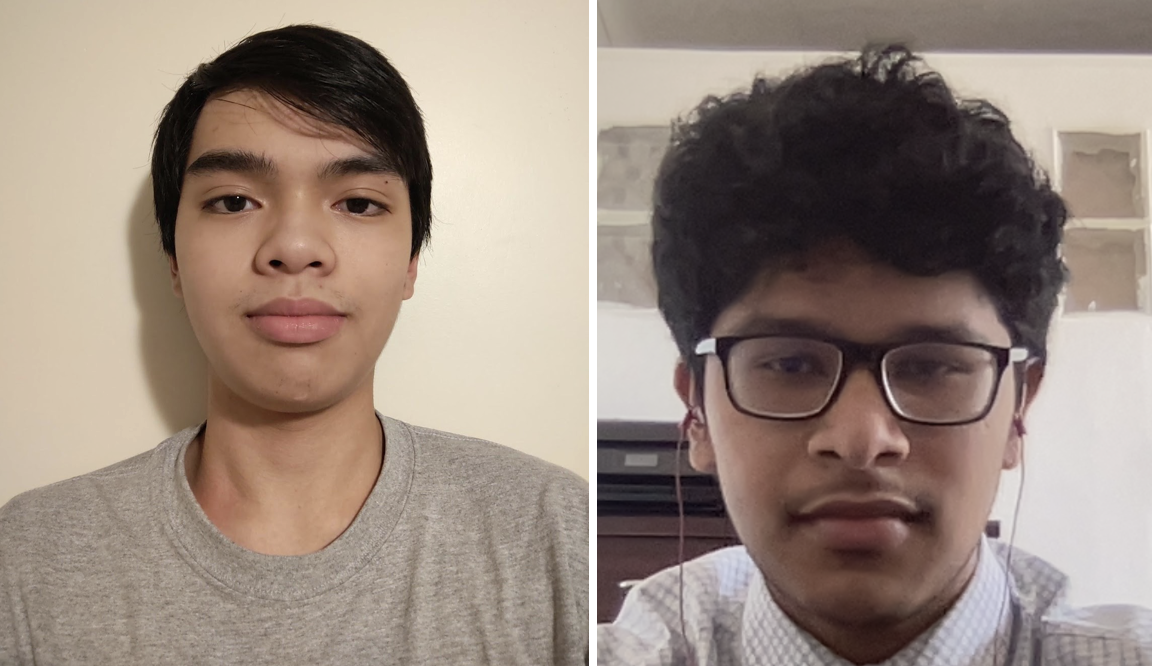
- Lab: ECE Machine Learning Laboratory
Abstract:
The field of self-driving cars is being widely explored by researchers and companies, and much has been accomplished in this area already, of which Deep Learning is a huge part. Our project’s name is “Camera Input based Autonomous Driving”. This project’s goal is to gain a deeper insight into how Deep learning tools are utilized and how camera input can be used to promote autonomous driving. In general, this is achieved by training a Convolutional Neural Network to learn the mapping from sensor data; in this case, sensor data are the input images of the road ahead of the car; to predict the car’s control commands such as steering wheel angle. We see rapid changes in the automobile industry especially in the last decade with the advancements in the field of Deep Learning, new approaches are being developed to alleviate the problems in existing approaches. In this project, we study one of the widely used approaches which is an end-to-end training of a Deep Learning model. This falls into the category of Supervised Learning class approaches. We also study the limitations of this approach. We use the data which we collect using an open-source driving simulator. It offers a realistic-looking driving environment with different types of tracks. This simulator also allows us to test the implemented approach by deploying our model and observing the real-time steering commands outputted by the model on the track..
Kyara Scott, Norine Almahmud

- Lab: Electrochemical Engineering Lab
Abstract:
Hundreds of millions of tons of annual carbon emission can be attributed to intensive energy consumption involved in chemical separation processes. Purified chemicals are in high demand for many industrial chemical processes including synthesis of plastic polymers such as polyethylene and polypropylene. Highly pure olefin gases (such as ethylene and propylene) are required in the making of these plastic polymers, but the purification of these gases from their paraffin counterpart is highly energy-inefficient because it relies on cryogenic distillation that employs hundreds of stages per tower. Finding alternative “green” methods of separation for olefin/paraffin gases is considered one of the most significant chemical engineering challenges known today. Our research attempts to tackle this problem directly by designing prototype composition for the membrane electrode assembly (MEA) within a flow cell reactor that can separate propylene from propane gases via electrochemical modulation of embedded silver species. The silver species can selectively capture and release propylene molecules from a gaseous mixture depending on its oxidation state. Porous layers consisting of carbon electrode nanoparticles, hybrid ionogel and silver salt were deposited onto carbon gas-diffusing layer by spray deposition. Separation performance of our device was characterized by Micro-GC (gas chromatography) and chronoamperometry via Potentiostat. Our research will attempt to optimize the system and identify relationships between varying composition of the MEA and gas separation performance.
Magaly Mendoza, Maryam Sow
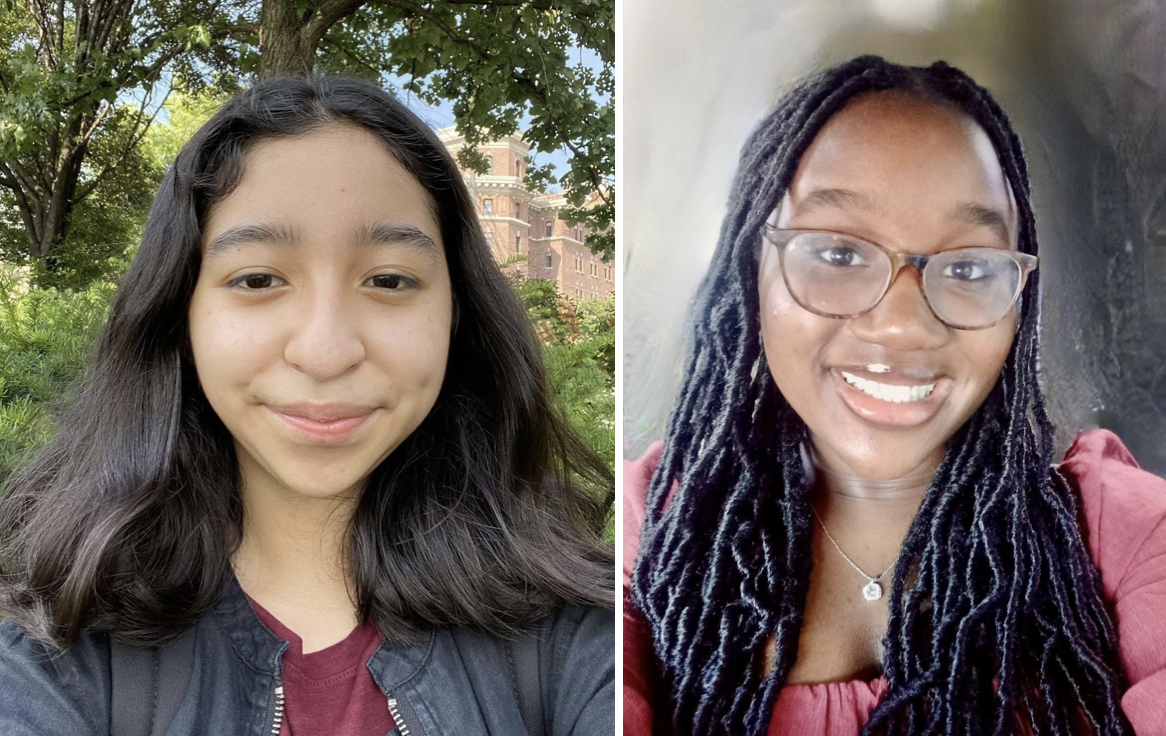
- Lab: Crystal Engineering Lab
Abstract:
To address the global climate change crisis, the development of inexpensive alternatives to silicon solar panels to harvest sunlight is urgently needed. While less efficient than silicon solar panels, carbon-based organic solar panels are compatible with solution-based, scalable processing methods, such as inkjet printing, and can be mass-produced at low cost. These solar panels use organic semiconductor crystals to convert light into electricity, with their solar conversion efficiencies dependent on the crystal orientation. In these crystals, electrons travel by hopping between π-orbitals of molecules. The hopping process is typically fastest along one direction of crystals, but aligning this direction within solar panels is difficult. Here, we examine crystal twisting in confined spaces as a means to control crystal orientations, with the ultimate goal of improving the solar conversion efficiency of organic solar panels. Using coumarin as a model organic compound, we formed twisted crystals by first melting coumarin with a naturally occurring tree resin, Damar gum (DM), between two glass slides and quickly cooling the film to induce crystallization. Under these conditions, coumarin crystals grew as banded spherulites, with individual bands representing different orientations of the crystals as they twist about the growth direction. We found that the spacing between bands, or twisting pitch, decreases with increasing DM concentration and the most uniform crystal twisting occurs at a DM concentration of 20 wt%. To further control the growth direction of coumarin banded spherulites, we also crystallized coumarin/DM melts within 5 μm tall x 100 μm wide channels of polymer molds. In these channels, the fast crystal growth direction and twisting bands aligned parallel and perpendicular with the long axis of the channels, respectively. Our results demonstrate that we can control crystal orientations both parallel and perpendicular to the substrate surface. Looking forward, we will apply these techniques to organic semiconductors, such as tetrathiafulvalene that can convert sunlight into electricity.
Nayeem Azan

- Lab: Applied Micro-Bioengineering Lab
Abstract:
Microfabrication, the process of engineering and transforming structures at the micrometer scale, allows us to manipulate and observe biosystems. At the cellular level, we studied the change in vascular smooth muscle cell mechanotransduction with aging with the goal of improving quality of life and dealing with age-related illnesses in the future. We revealed an increase in traction force generated by cell-ECM interaction by using elastic micropillar arrays and analysis software, including MATLAB, ImageJ, and Cellogram. At the tissue level, we were able to study the molecular dynamics of T cell and tumor cell interactions using soft lithography techniques to construct pancreatic cancer-on-a-chip. Utilizing Angiotool Analysis and ImageJ, we analyzed the formation of vascular beds, which were possible due to the structure of a chip in contrast to both 2D and animal models, as well as morphology changes in vivo of these cells, with the aim of providing improved immunotherapy screening and personalized medicine in the future.
Su Pyae Sone Win, Sumit Dhar
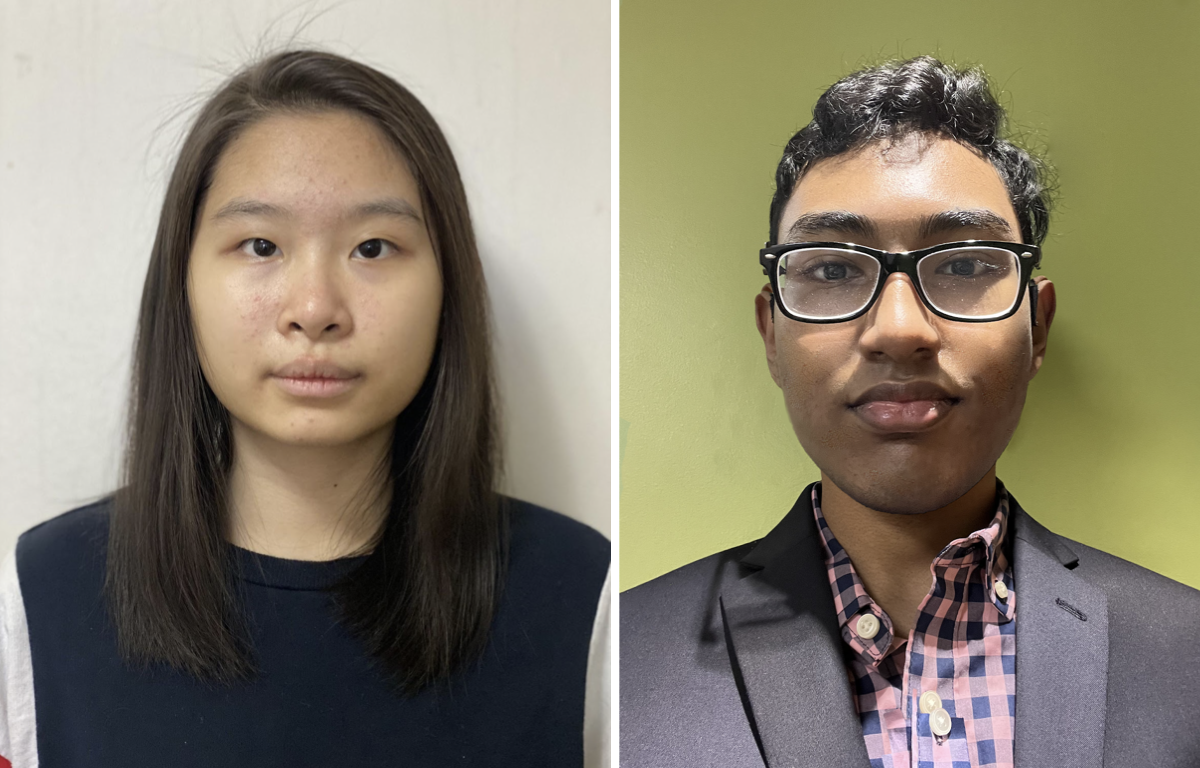
- Lab: ECE Machine Learning Laboratory
Abstract:
The field of Deep Learning(DL) has been advancing rapidly in different directions such as Computer Vision, Natural Language Processing etc. Despite these advancements, the geometry and the properties of the loss landscape of the DL models are still not well understood. To address this lack of understanding, researchers introduced different flatness measures and metrics. In this way, it became possible to analyze the relationship between the properties of the local minimum after convergence and the generalization capability of the model. The main motivation behind this is to develop robust mechanisms which can boost the generalization capability after finding clues and hints about the loss landscape. Our project’s name is “Analysis of the Relation between Shannon Entropy and Generalization Gap”. This project’s aim is to investigate the correlation between the generalization capability of the model’s converged local minimum with the Shannon Entropy metric that is calculated on the DL model’s output neurons. We run experiments on CIFAR-10 and MNIST datasets using a ResNet model and a deep MLP model with varying hyperparameters. After the experiments are completed, we calculate the Kendall-Tau correlation coefficient between the generalization gap and the Shannon Entropy metric to quantify the strength of relation.
Session 2 12:00 pm - 1:30 pm
Brian Chica-Herrera, Lin Finnegan
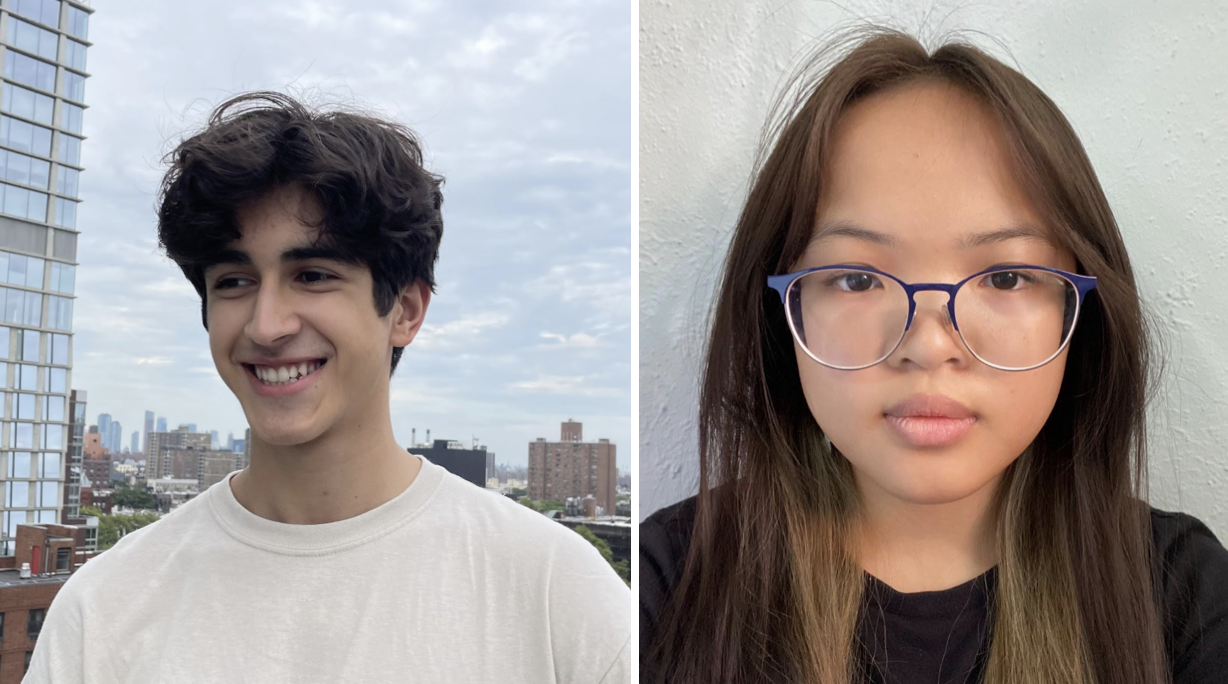
- Lab: Smart Energy Research (SEARCH) Group
Abstract:
Large-scale anthropogenic changes to the environment, such as increased carbon emissions, have caused detrimental effects to the planet’s health. Carbon released into the atmosphere creates global warming due to the greenhouse effect, harming wildlife, reducing habitats, and intensifying natural disasters. This paper seeks to provide visualizations to represent the viability of carbon capture technologies. This paper will also compare the cost gradient per metric ton of CO2, the installation costs, the equipment required, and the stage of technological maturity of different types of biological sequestration (using organisms such as algae and plants to absorb more CO2). Using the coding languages Python and Julia, this study uses optimization methods to produce profitability gradient graphs that combine different parameters of capture technology. For example, pairing NGCC (natural gas combined cycle) factories with capture at the source or pairing IGCC (integrated gasification combines cycle) factories with DAC (direct air capture) technologies while varying the carbon price or the price of capture technologies, are scenarios which, when graphed, can be used to make informed decisions about the future of carbon capture.
Devynn Adams, Lena Lin

- Lab: Chunara Lab
Abstract:
Disparities in food environments or the geographical access to food in a community may hinder the accessibility of healthy food alternatives. To highlight this discrepancy, our project sought to understand the relationship between the differences in food systems in terms of accessibility and affordability of whole or Organic food stores in comparison to bodegas across New York City and health outcomes related to food behaviors such as diabetes, cardiovascular diseases, cancer, obesity at the population level. By using data from Measure of America, we first pinpoint different social, economical, and geographic determinants that could pose an impact on the food system of a neighborhood. Then, we found correlations between those determinants to probable health problems that could come up because of the lack of accessibility to healthy food alternatives. To achieve this, we imported, processed, and analyzed data using the software library Pandas and NumPy using Python. As a result, we were successful in graphically assessing the correlation between food environments and health conditions.
Maha Naveed, Mikayla Sahadi

- Lab: Evolutionary Morphology Lab
Abstract:
The locomotor behaviors of primates are reflected in the morphology (size and shape) of the skeleton, including limb joints, which determine range of motion. In this study, we assess the lunate surface of the acetabulum, part of the hip joint. The objective of our research is to evaluate how the morphology of the acetabulum has evolved in order to accommodate the locomotion of different species of primates. In addition, we also examine the expression of sexual dimorphism in the acetabulum. Our sample is comprised of apes and monkeys of different locomotor categories, all of which have adapted to different ecological niches. These are used as a comparison to fossil primate specimens. We use 3D landmark coordinate data and multivariate analyses to measure shape variation of the lunate surface. We predict that the shape of the acetabulum will reflect differences between locomotor groups and sexes.
Naowal Rahman, Ron Vasserman
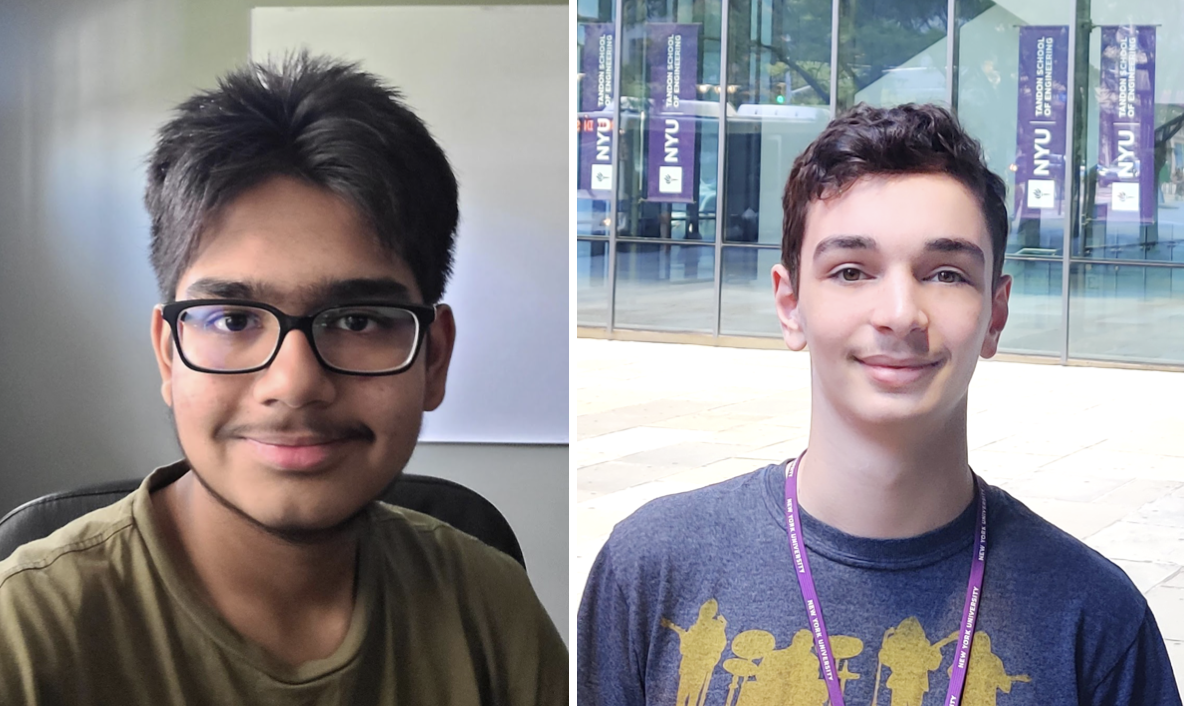
- Lab: Smart Energy Research (SEARCH) Group
Abstract:
In the midst of a global effort to decarbonize industrial processes, electrification is one such process in the chemical industry that can replace emissive energy sources with renewable ones. In the context of ethylene (C2H4), applying electrochemical ethylene production widely in the chemical industry can allow for significant emissions decreases over current methods, which use petrochemical steam cracking. To optimize such a transition, we analyze profitability and emissions from electrified steam cracking for ethylene production by varying parameters such as carbon intensity of the electrical grid, cost of natural gas, consumption of hydrogen used or sold, cost of hydrogen, and cost of electricity. Using the dynamically typed programming languages Julia and Python, tipping points are highlighted after calculation of the maximum profitability using the JuMP optimization library. We graph the results, comparing different parameters and their corresponding objective values, sometimes analyzing the impact of a single parameter but also considering permutations of parameters via heatmaps and three-dimensional plots. We also consider the impact of time on profitability and analyze the fluctuations using parameter cost and emissions projections between 2022 and 2050. These ranges and combinations represent a composite overview of electrification implementation and its ideal profitability with minimal carbon emissions.
Rishima Pokharel
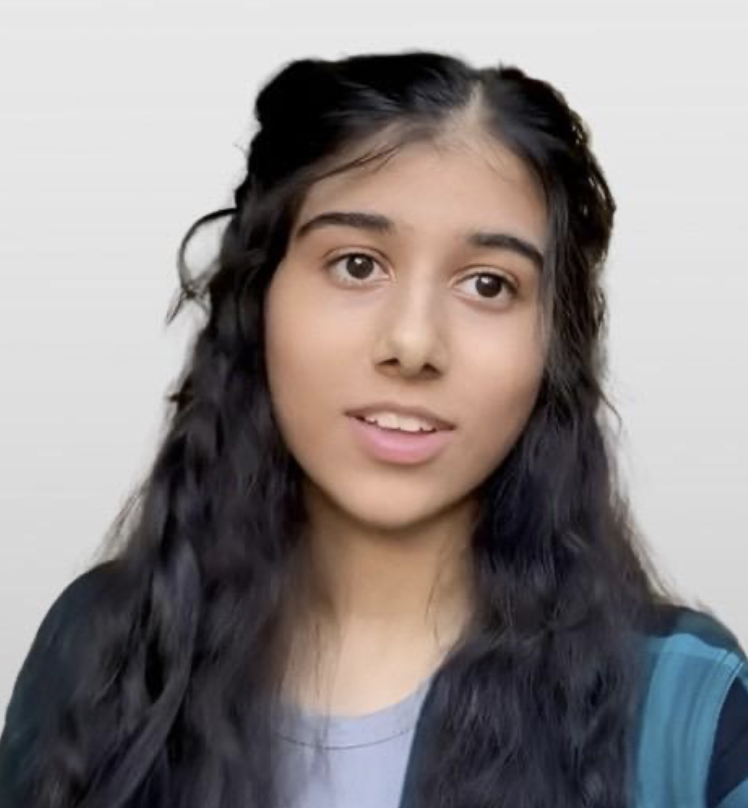
- Lab: Applied Micro-Bioengineering Lab
Abstract:
Microfabrication, the process of engineering and transforming structures at the micrometer scale, allows us to manipulate and observe biosystems. At the cellular level, we studied the change in vascular smooth muscle cell mechanotransduction with aging with the goal of improving quality of life and dealing with age-related illnesses in the future. We revealed an increase in traction force generated by cell-ECM interaction by using elastic micropillar arrays and analysis software, including MATLAB, ImageJ, and Cellogram. At the tissue level, we were able to study the molecular dynamics of T cell and tumor cell interactions using soft lithography techniques to construct pancreatic cancer-on-a-chip. Utilizing Angiotool Analysis and ImageJ, we analyzed the formation of vascular beds, which were possible due to the structure of a chip in contrast to both 2D and animal models, as well as morphology changes in vivo of these cells, with the aim of providing improved immunotherapy screening and personalized medicine in the future.
Panel D
Students in Panel D listed alphabetically:
Session 1
- Ahaylee Rahman
- Alexander Sanchez
- Ella Andonov
- Isabella Villanueva
- Jade Sanchez
- Mia Mbom
- Nabila Jahan
- Sage Robinson
- Sahibjot Singh
Session 2
- Alice Yang
- Brayden Diu
- Harkirat Singh
- Jaziel Aquino
- Kyrylo Sirik
- Rania Alam
- Riley Askenazi
- William Neira
Ahaylee Rahman, Ella Andonov, Isabella Villanueva
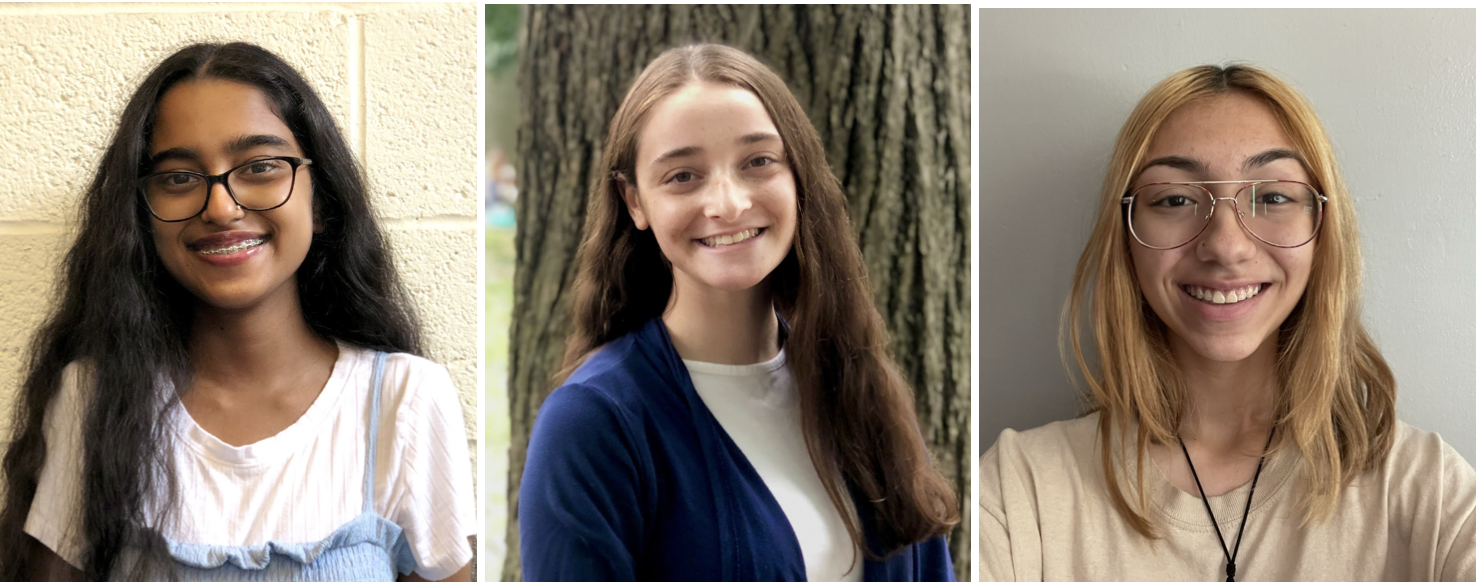
- Lab: Primate Hormones and Behavior
Abstract:
Exposure to adversity, particularly during early life, has lasting negative implications on human health. Due to the complexity of human nature, many variables are interconnected and therefore it is difficult to disentangle the effects of adversity. However, researchers can use simpler animal models to draw parallels between human and primate development. Here, we study a controlled population of 5,129 free ranging rhesus macaques (Macaca mulatta) from Cayo Santiago, an island off the coast of Puerto Rico, from 1957-2017. We focus on social and ecological factors and how they impact overall health and fitness. Specifically, we leveraged historical demographic and ecological data to measure matrilineal rank, number of older siblings, mean maximum temperatures during the first year of life, age at death, and age at first female reproduction. We hypothesize that offspring born to high ranking mothers, with fewer siblings, living in a stable climate, will have a higher rate of survival and accelerated reproductive maturity. To test our hypotheses, we will use Cox proportional hazards models visualized with Kaplan-Meier graphs. Our results can have broader implications for how human health is affected by adversities such as societal status, competitive environments, and climate change.
Alexander Sanchez
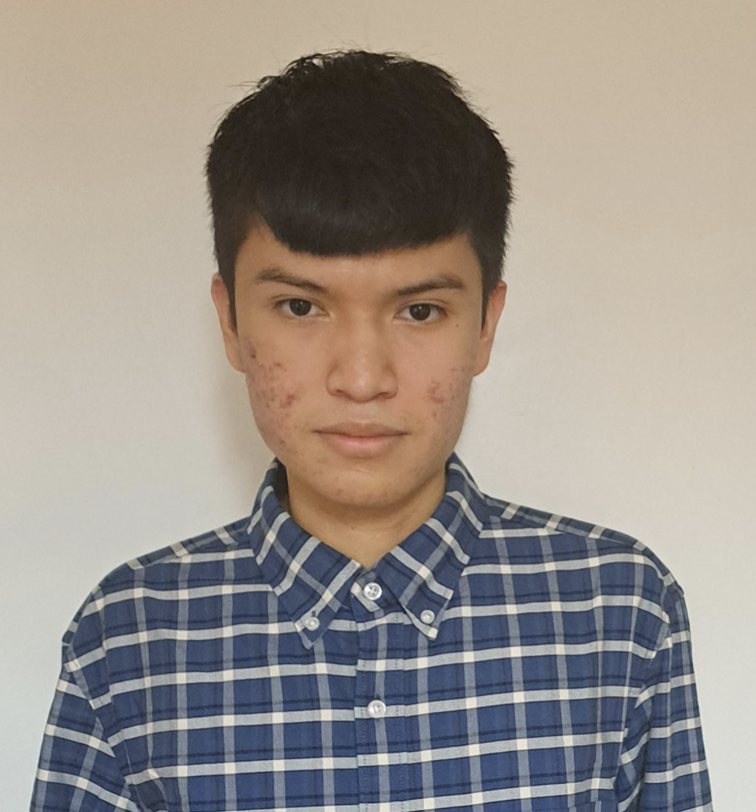
- Lab: Behavioral Urban Informatics, Logistics, and Transport (BUILT) Lab
Abstract:
Trucks are one of New York City's most important elements, meant to deliver goods to its citizens and serve the local economy. However, according to Our World In Data, trucks account for 29.4% of carbon dioxide emissions from the transportation sector on a global scale. In New York City in particular, these emissions are mostly linked to issues such as congestion where speeds are relatively low, thus yielding a greater emission quantity. Therefore, using Quantum Geographic Information System (QGIS) data and prior studies, this research aims to establish a connection between truck speeds in New York City and CO2 emissions to see how these emissions could be minimized through routing suggestions in a navigation platform for NYCDOT. Such information is crucial in order for truck drivers to find an efficient path to their destinations while also promoting a cleaner environment.
Jade Sanchez, Sahibjot Singh
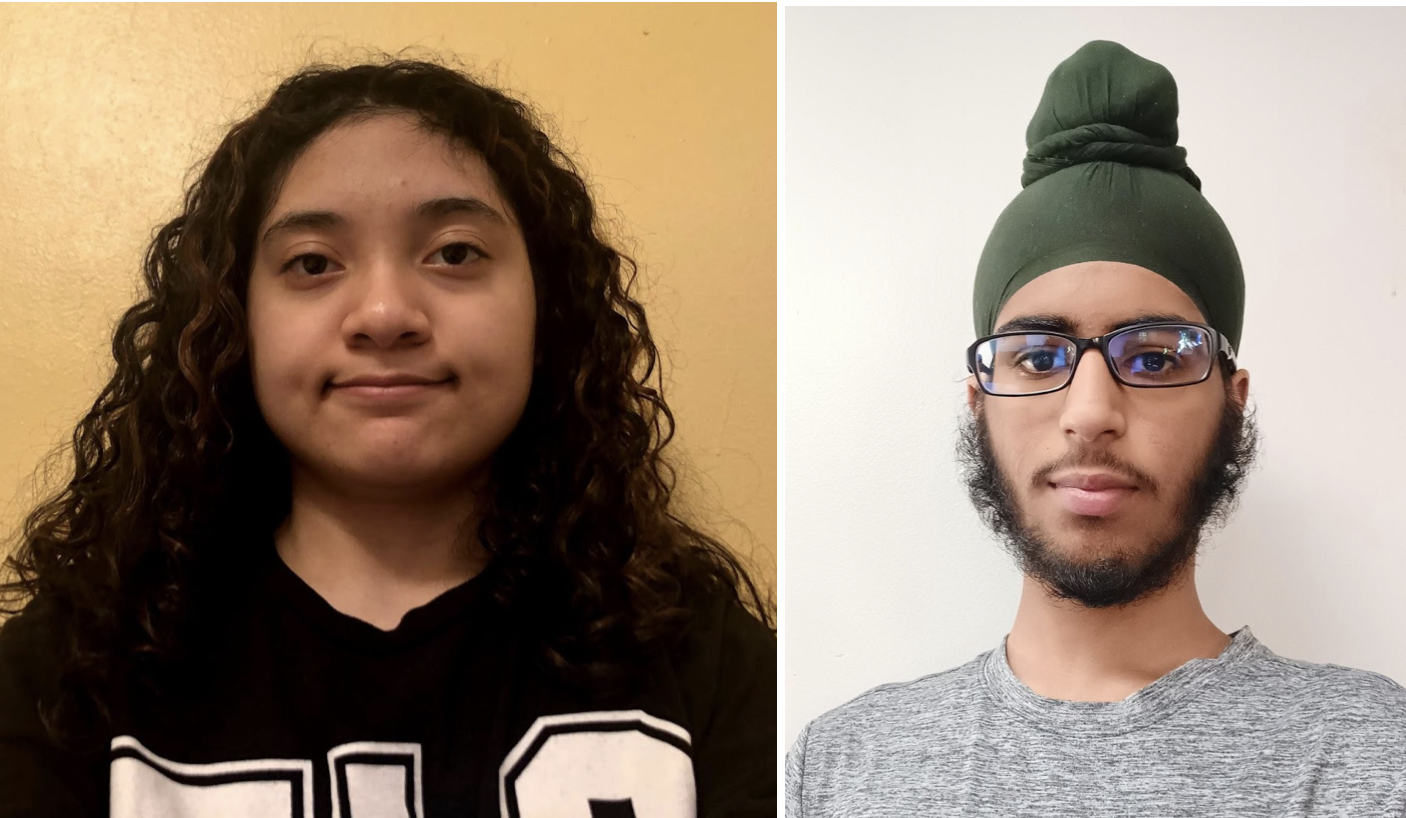
- Lab: Mechatronics, Controls, and Robotics Lab
Abstract:
Mechatronic and robotic systems utilize sensors to gather information about their surroundings in the form of digital signals. To properly interpret these signals, robots and mechatronic devices use a built-in data acquisition system (DAS) which can receive, parse, store, and display the data in a user-friendly manner. These DAS are highly specialized and are designed to work with a particular set of sensors and data types, which makes these DAS unsuitable for testing a variety of sensors during prototyping. This necessitates the development of a customizable DAS capable of working with a range of commonly available data types to increase overall productivity. Thus, this work demonstrates the design and development of a general-purpose DAS with an intuitive user interface. The DAS can receive data from a serial port and parse it according to the user’s specifications. It can also store and display the data in several commonly used data storage formats. The system is validated on data gathered in real-time from a set of wearable inertial sensors which are used for real-time simultaneous triplanar motion capture of the upper extremity.
Mia Mbom, Nabila Jahan

- Lab: Montclare Lab
Abstract:
Severe acute respiratory syndrome coronavirus 2 (SARS-CoV-2) has caused a global pandemic since December 2019, and with it, a push for innovations in rapid testing and neutralizing antibody treatments in an effort to solve the spread and fatality of the disease. One such solution to both of these prevailing issues is targeting the interaction of SARS-CoV-2 spike receptor binding domain (RBD) with the human angiotensin-converting enzyme 2 (ACE2) receptor protein. We have recently created fusions of the N-terminal alpha-helix comprised of the first 23 residues of ACE2 with the coiled-coil domain of the cartilage oligomeric matrix protein to create multivalent scaffolds called ACE-MAPs that bind COVID with high affinity. To enable these fusions as potent binders for therapeutic and biosensing applications, we aim to improve the binding affinity through optimization of the scaffold. We utilize rationale protein design to create variants using site-directed mutagenesis to improve and explore the impact of the sequence space and better understand the impact of our scaffold on the ability to bind COVID virions at high affinity.
Sage Robinson

- Lab: Behavioral Urban Informatics, Logistics, and Transport (BUILT) Lab
Abstract:
As the consequences of climate change continue to become more apparent, many cities across the world, particularly in Europe, have instituted policies to decrease pollution and increase sustainability. Car free zones are one such policy that aims to make cities more pedestrian-friendly by banning or severely limiting cars in certain areas. With the onset of a global pandemic in 2020, social distancing and outdoor spaces became significantly more important in reducing the spread of COVID and its devastating impact on local economies. As the vast majority of cities with car-free policies are in Europe this project is only representative of Europe, not the world. This project aims to discover if cities that instituted a car-free policy before COVID (and maintained it for at least a year between 2019-2021) had a better economic recovery from COVID than cities that did not. The project also includes some environmental factors to gauge if car-free zones promoted sustainability as well as economic recovery. Five cities with car-free zones (Barcelona, Paris, Madrid, Hamburg, and Vienna) were compared to five cities without car-free zones (Birmingham, Bucharest, Berlin, Warsaw, and Sofia) across a number of economic and environmental indicators that ranged from the change in the number of passengers using public transportation to the change in the unemployment rate. The data from the chosen indicators will be analyzed to find the effect of car-free policies on a city’s economic recovery from COVID as well as its shift to sustainability.
Session 2 12:00 pm - 1:30 pm
Alice Yang, Brayden Diu
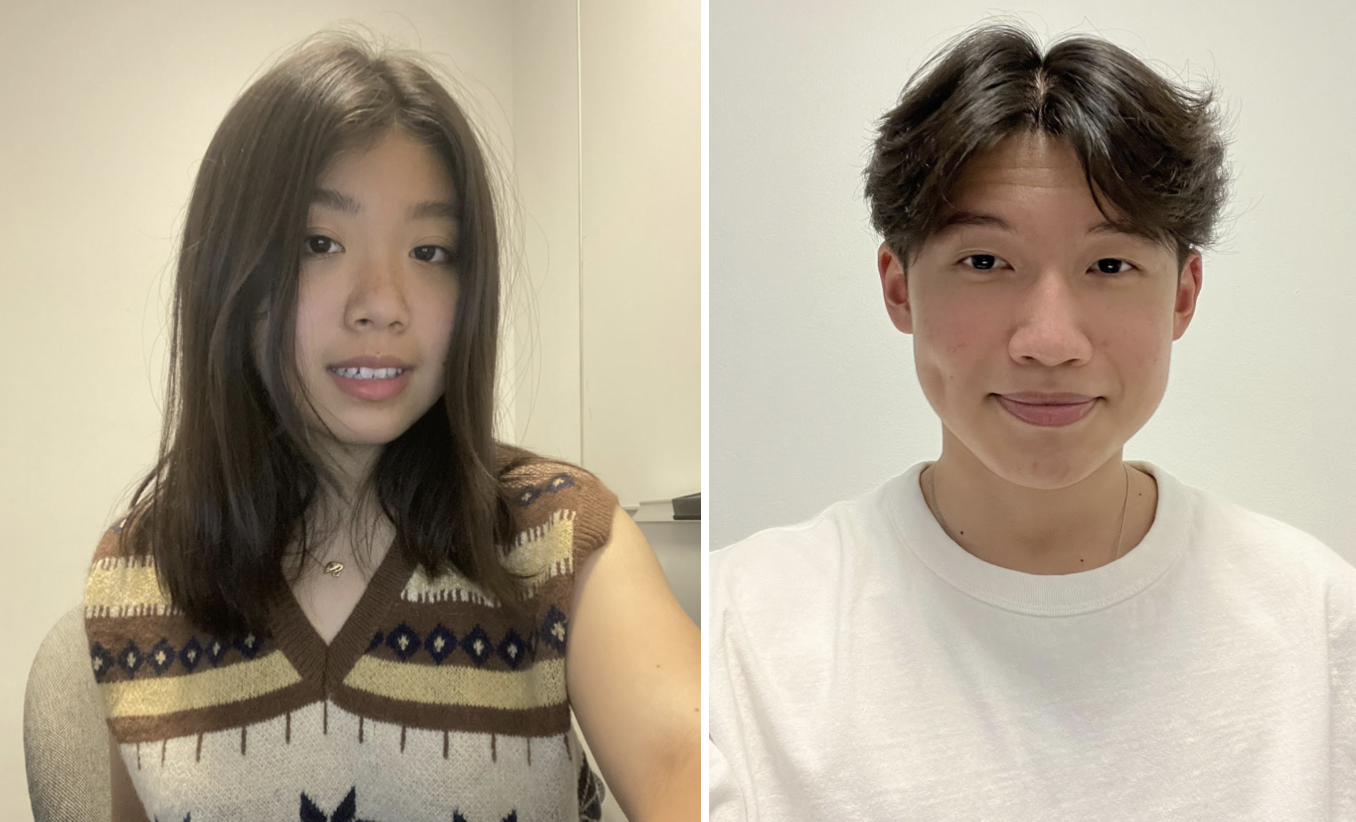
- Lab: Urban Modeling Group
Abstract:
In the coastal south-western neighborhood of Sunset Park, Brooklyn, there is an acute problem with overflowing trash. The purpose of our research is to evaluate the extent to which transportation lines, residential areas, and statuses of 311 trash complaints affect trash overload. We conducted field work from 39th Street to 59th Street in Sunset Park mapping instances of trash overflow utilizing a digital twin mobile application . We created a visualization using QGIS and ArcGIS displaying the collected data as well as open data layers from NYC Open Data. Our research will aim to help identify the major factors contributing to trash overflow and make recommendations for legislation and sanitation reform that could widely reduce trash overflow in Sunset Park.
Harkirat Singh

- Lab: CATT Center for Advanced Technology in Telecommunications
Abstract:
Recent advances in network technologies, including cloud- and edge-compute capability and wireless links with high capacity and low delay, are essential for emerging applications such as virtual reality and real-time gaming. However, it is difficult for networking researchers to understand the experience of users of these applications, especially how they perceive the effect of delay. To address this, we develop an experimental setup where a human and an artificial intelligence (AI) player compete in a distributed game of Pictionary over a network. Various delay elements in the network can be adjusted to understand the relative impact on the human and AI players. Through this work, researchers can achieve a better understanding of how delay impacts user experience, and focus their efforts on the most impactful interventions.
Jaziel Aquino, Rania Alam
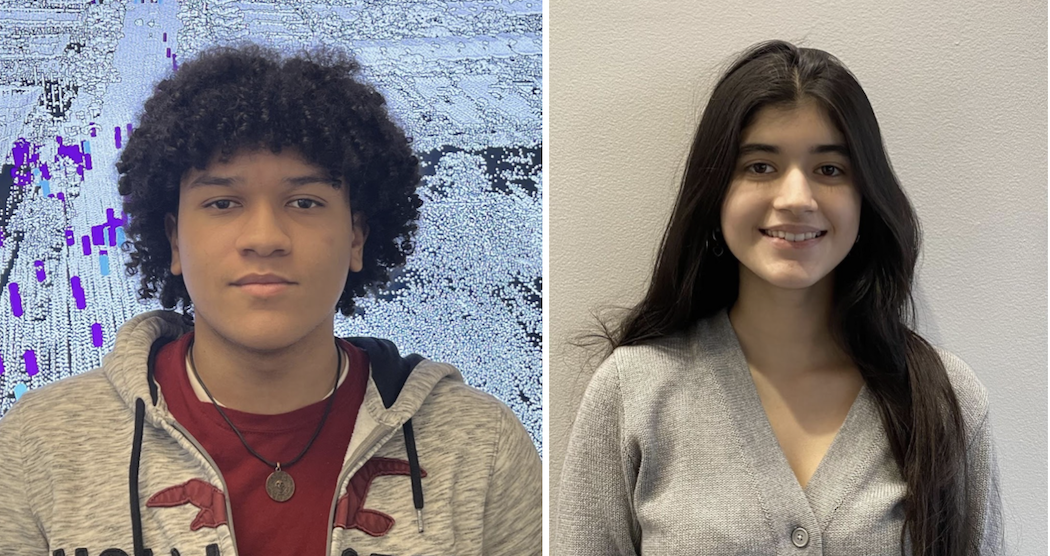
- Lab: Urban Modeling Group
Abstract:
An integral part in understanding how diseases spread is to examine community transmission. This includes factors like where people go, where they come from, and their interactions with the surrounding environment. This research utilizes existing data from an NSF-funded COVID-19 project. This dataset includes egress and behavioral observations collected at 25 healthcare facilities in 6 countries and 11 US counties in the first nine months of 2021. This research aims to define the relationship and correlation between touch behavior and destination patterns through the visualization of tabular data and multiple regression analysis. Additionally, an interactive dashboard and a 3-D geospatial visualization using LiDAR data will be created to showcase how the trends exist in a 3-D environment. This research will establish a workflow that can enable analysts to quickly advise and communicate vital information across a broad range of use cases (e.g. to handle the spread of future epidemics, including the spread of COVID-19, Monkeypox, Ebola, etc).
Tools: Python 3, Tableau, PotreeJS, Jupyter, Numpy, Pandas, Matplotlib, Seaborn
Kyrylo Sirik, William Neira

- Lab: Chromosome Inheritance Lab
Abstract:
Meiosis is a critical process for eukaryotic gamete formation. During meiosis a cell divides the genome twice, producing haploid cells. A key feature of meiosis is the production of genetic diversity, which is achieved through crossovers, or the reciprocal exchange of DNA between homologous chromosomes. Crossovers ensure that progeny are genetically unique from their parents, but failure to make crossovers results in infertility due to aneuploid chromosome inheritance. The identification of mutations that directly affect meiotic functions may lead to a greater understanding of the molecular mechanisms underpinning meiosis. Meiotic mechanisms are highly conserved between eukaryotes. Utilizing Saccharomyces cerevisiae, commonly known as budding yeast, we use a classical Ethyl Methanesulfonate (EMS) reverse genetic screen to introduce novel mutations throughout the yeast genome. We have identified fourteen candidate strains harboring unique alleles, all of which are critical for meiosis. A subset of these alleles is associated with the Spo11 locus. Spo11 inflicts DNA double-strand breaks to initiate the process of crossover formation. To identify each specific Spo11 allele we extracted DNA, amplified the DNA via Polymerase Chain Reaction (PCR) and performed Sanger sequencing to map the causative mutation introduced in each candidate strain. Utilizing in silico analysis, we can make predictions on which domain of Spo11 will be affected in each mutation. These findings could ultimately guide future advances in the development of treatments for human infertility.
Riley Askenazi
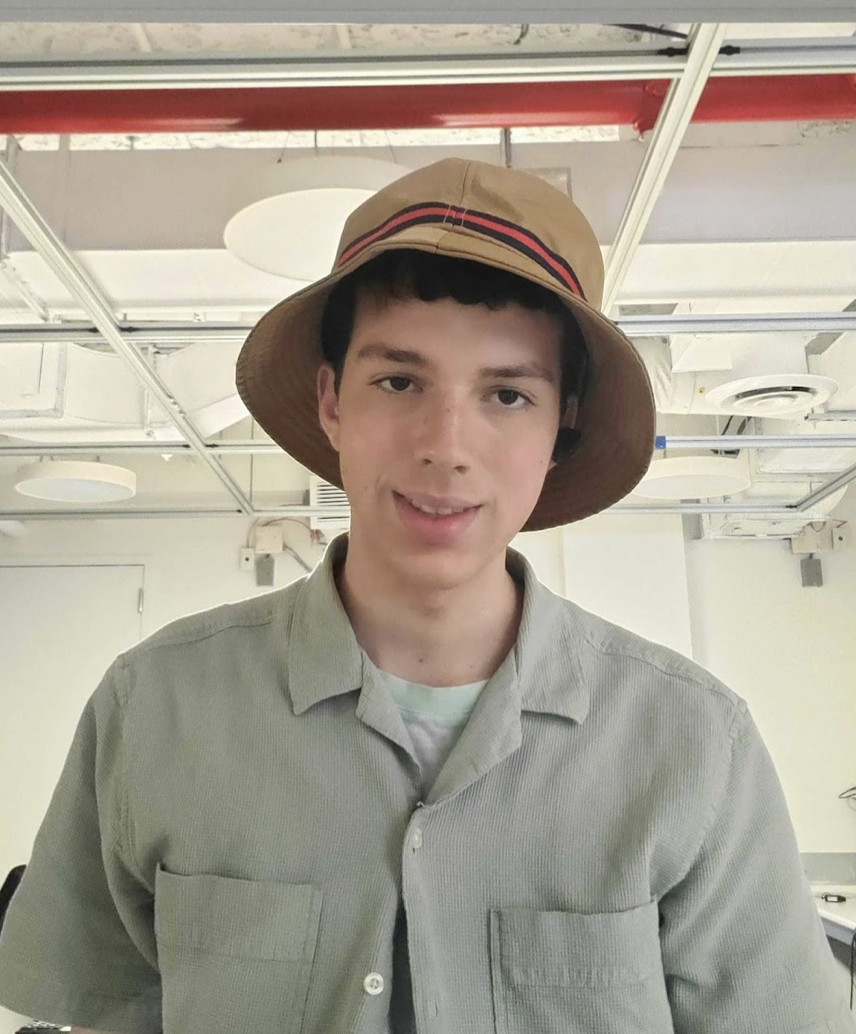
- Lab: CATT Center for Advanced Technology in Telecommunications
Abstract:
In networked applications, delay has a negative effect on usability. However, for researchers developing network technology, it can be difficult to understand this effect, because the relationship between objective delay (which is easily measurable) and the human experience (which is not easily measurable) is non-trivial. To address this, we develop an experimental setup representative of a remote surgery situation, based on the classic game Operation. In our experiment, a human player sends commands over a network in order to manipulate a robotic arm over the game board. By adjusting the delay in the network, we can measure the game "win" rate (a proxy for usability) versus network delay. This work will help engineers and researchers working on network technology understand the effect of delay more completely, so that they can work to mitigate it more effectively.


